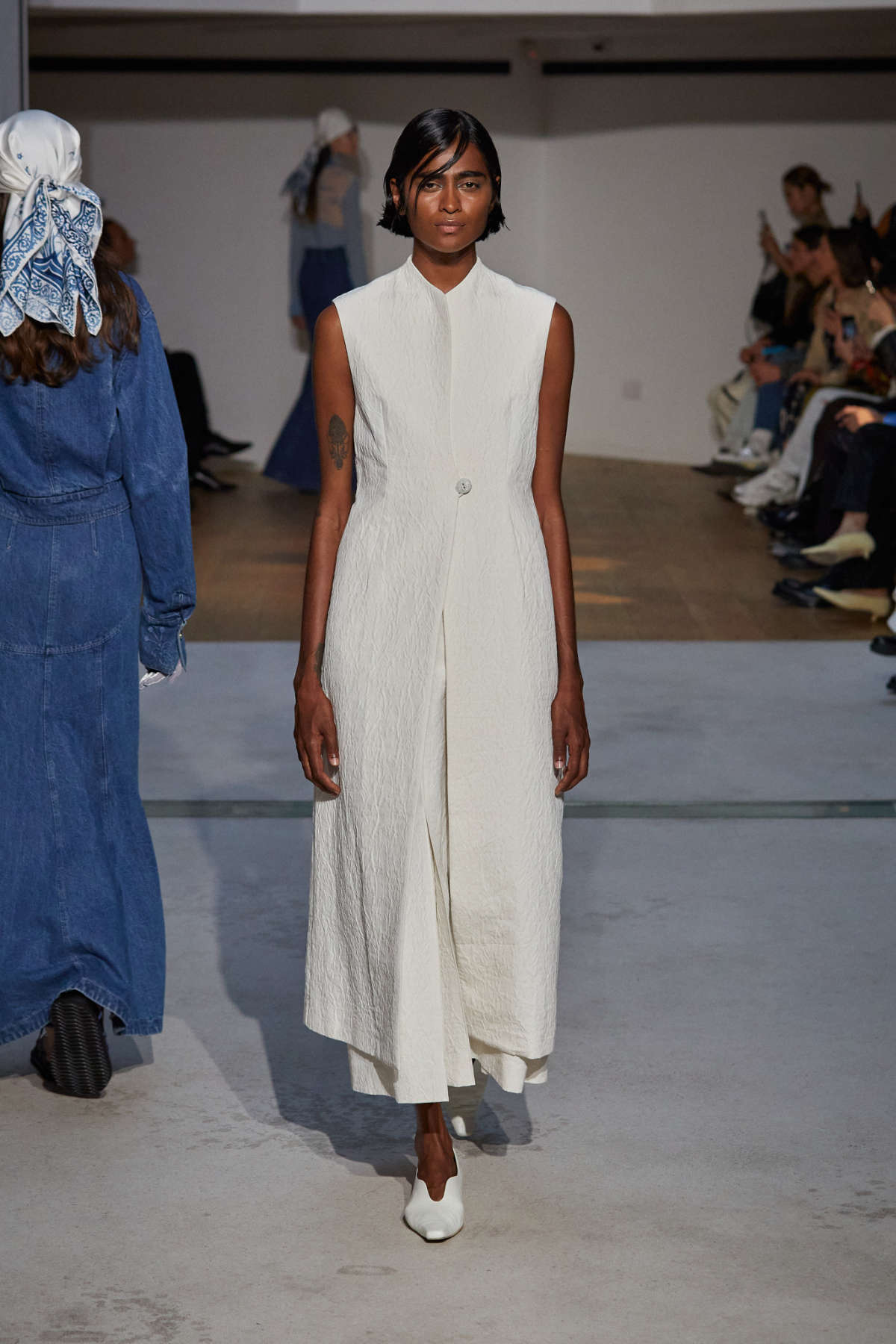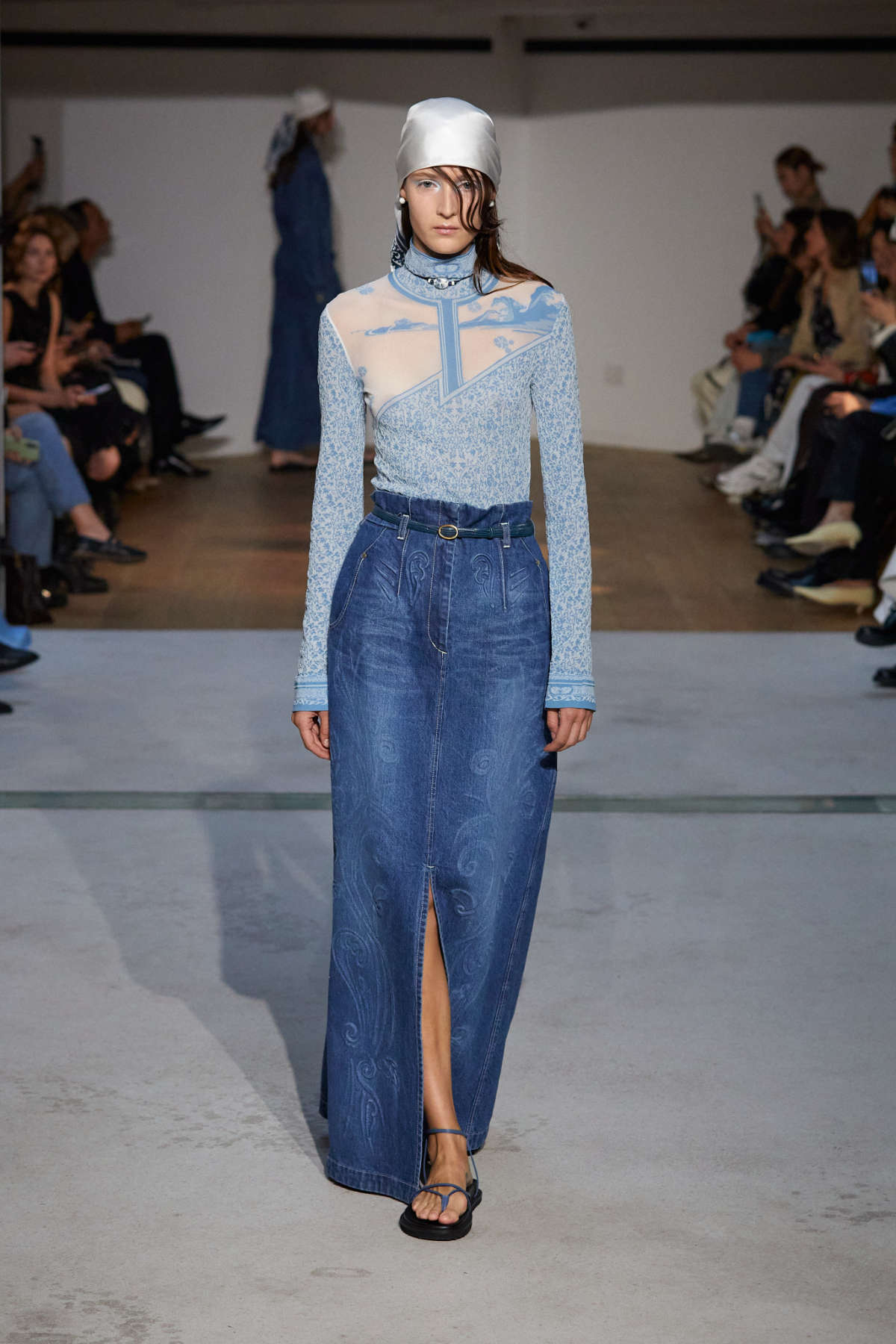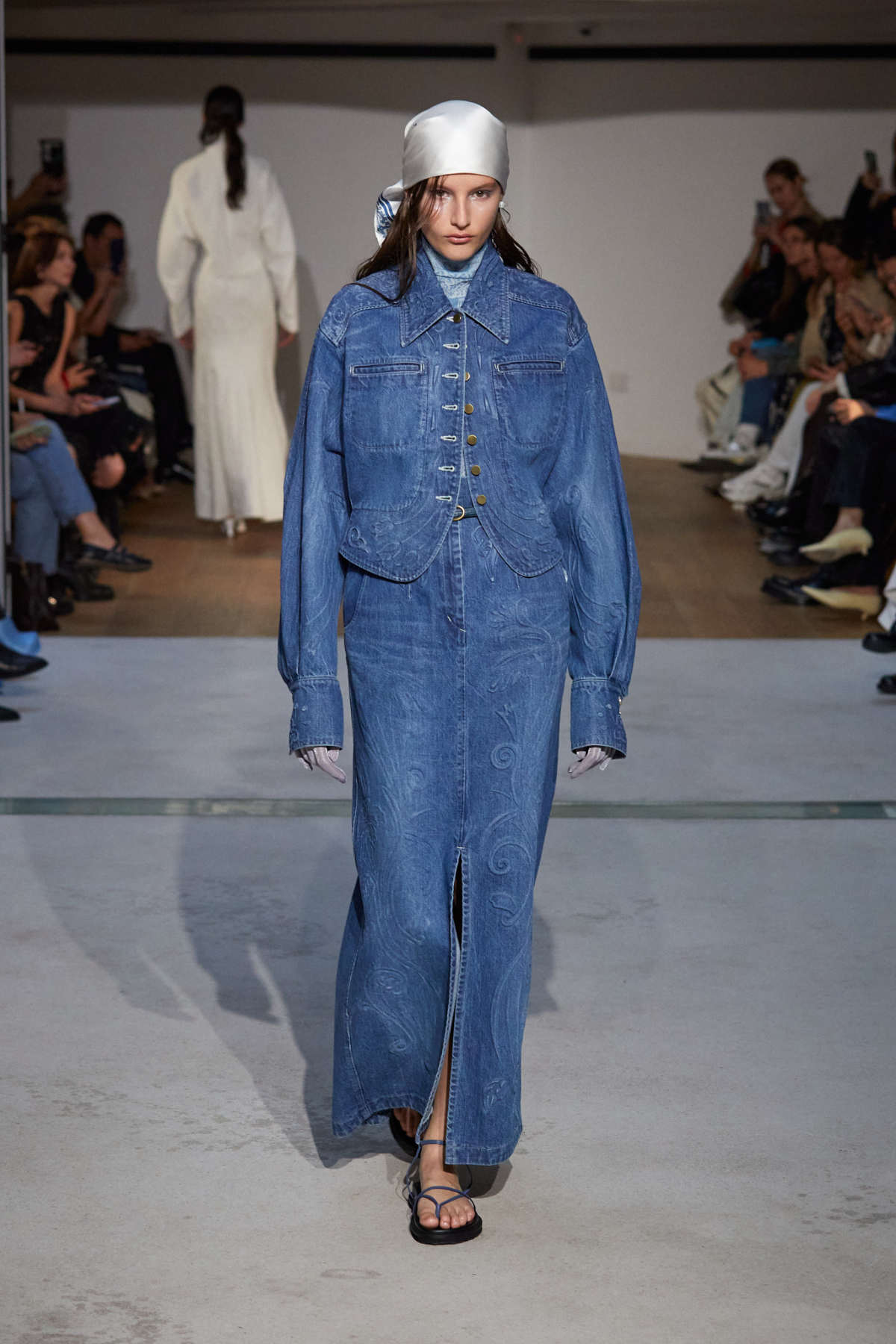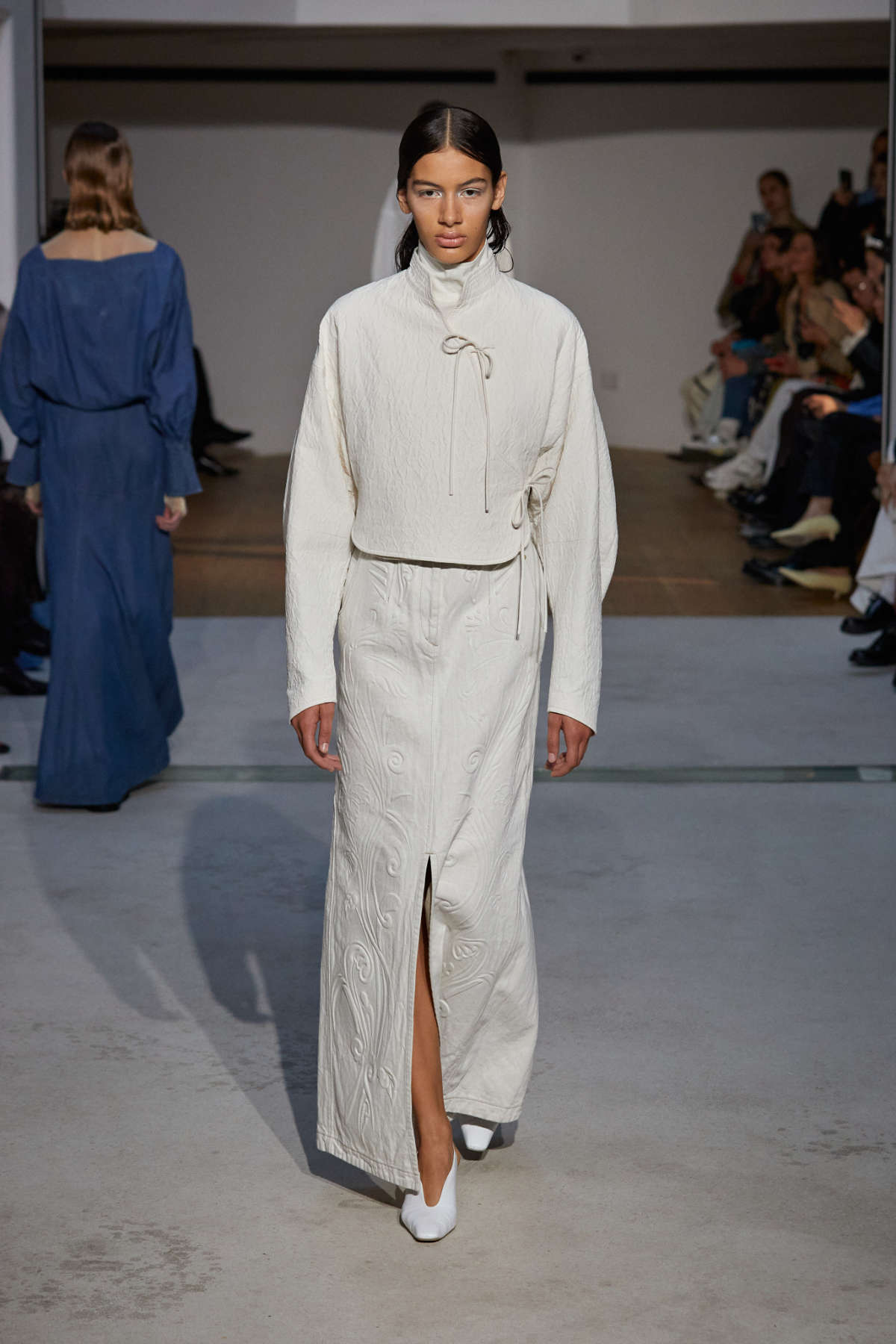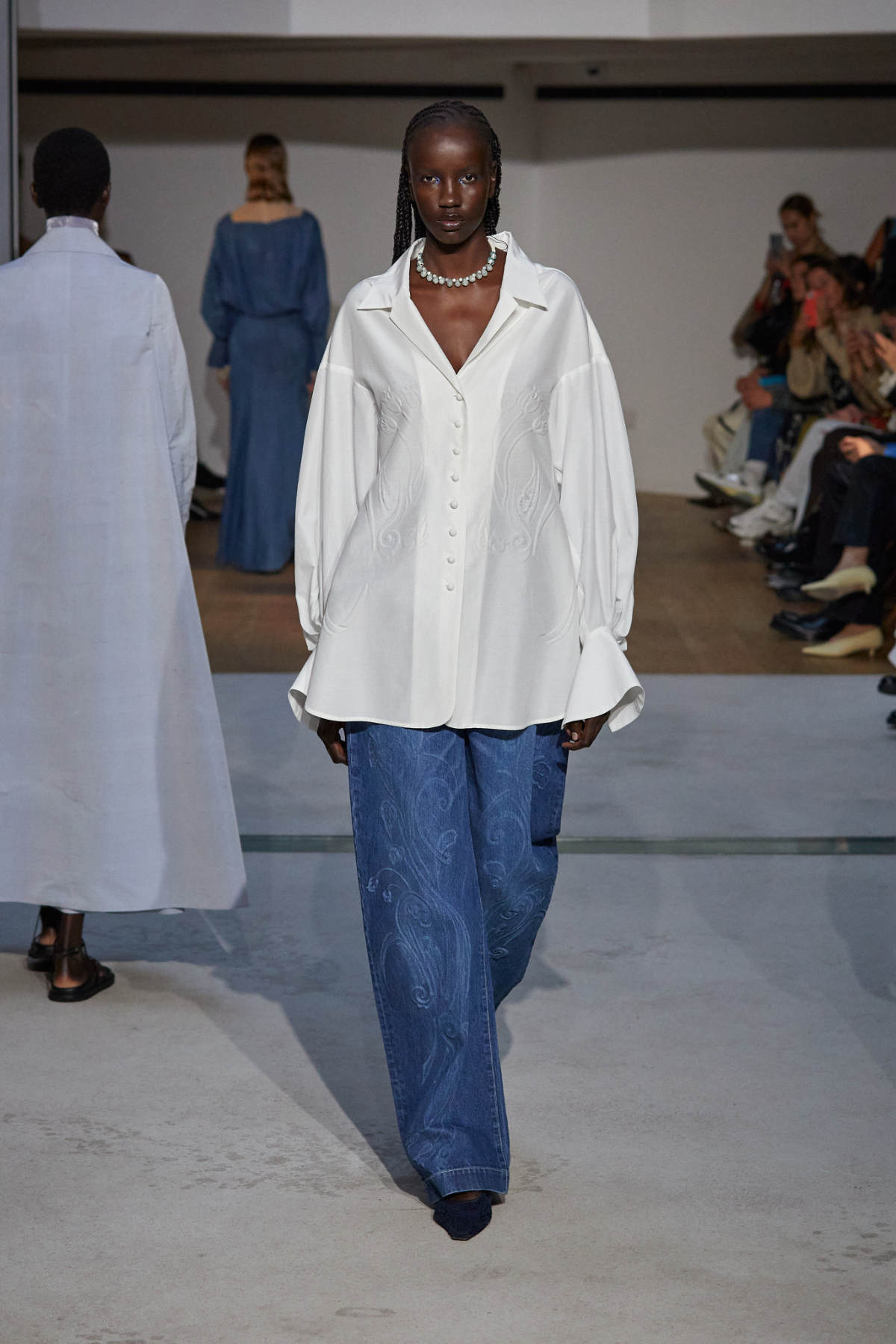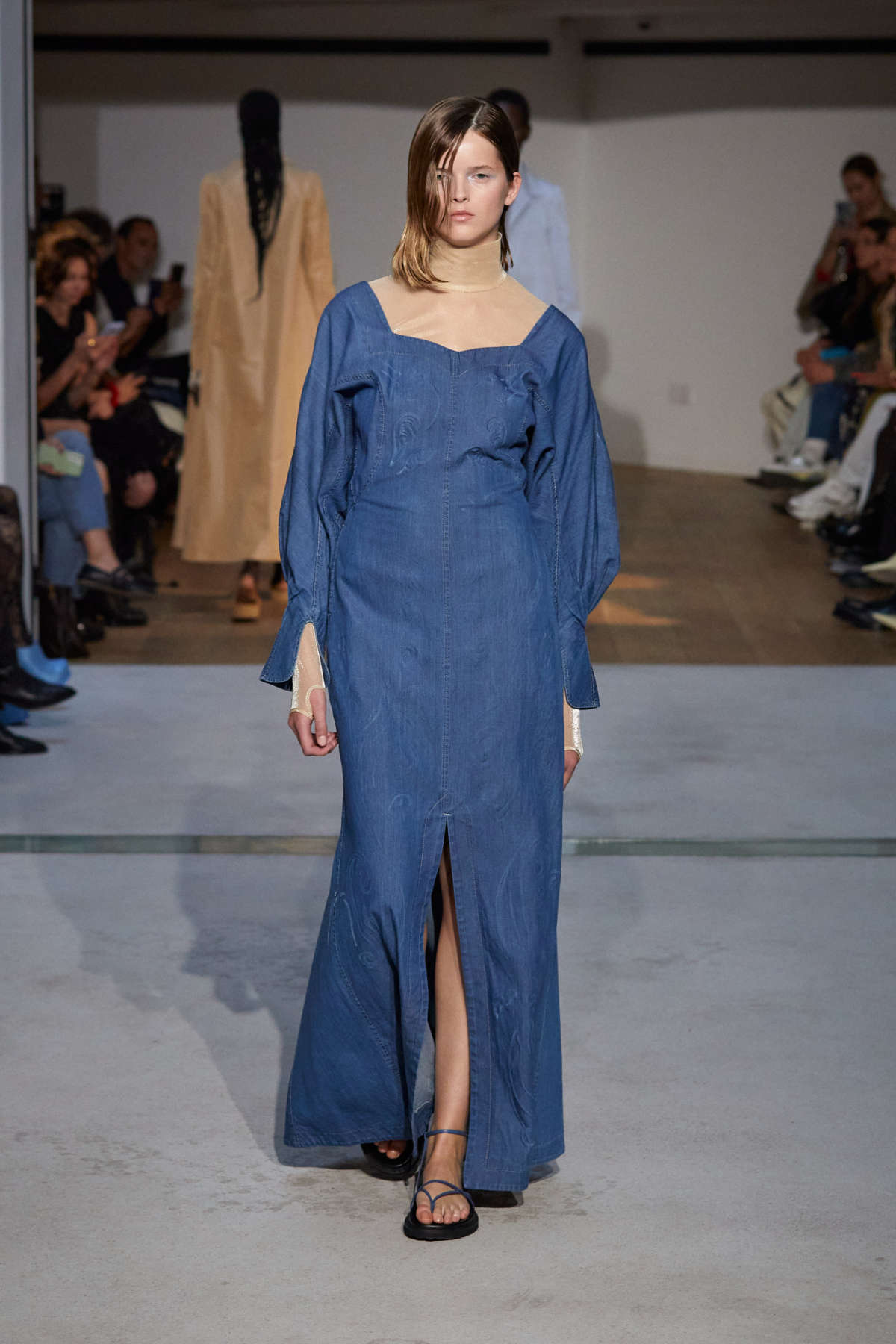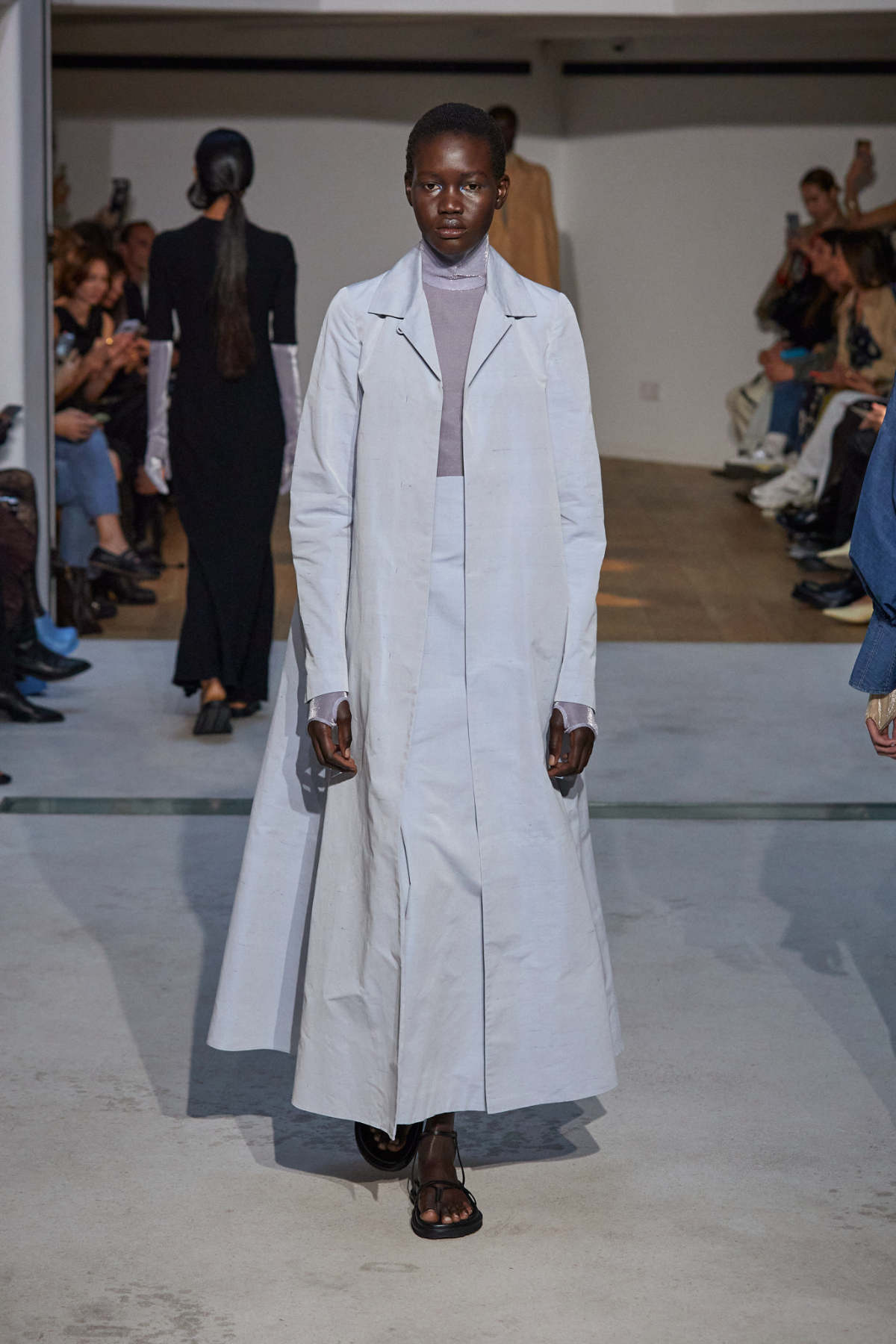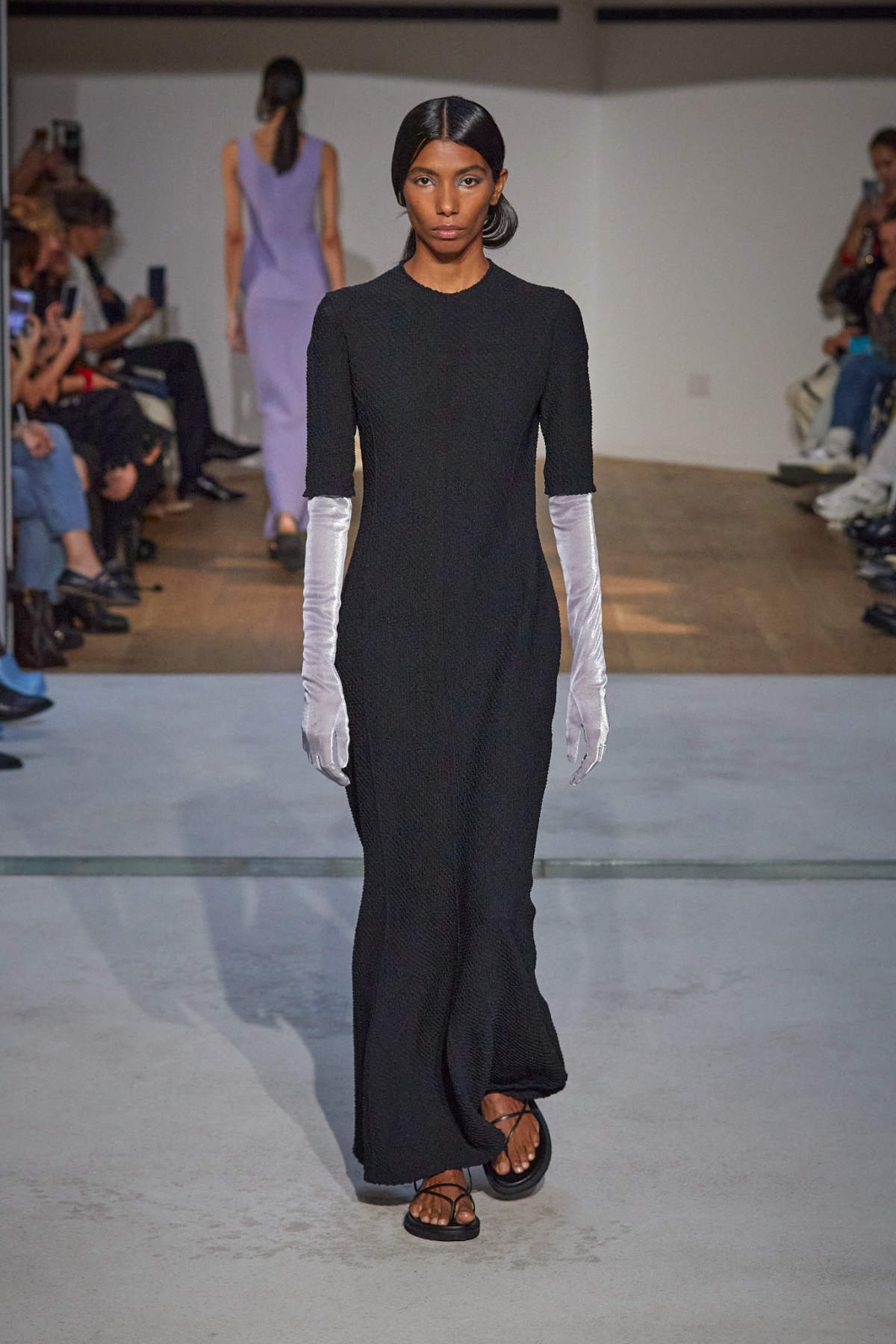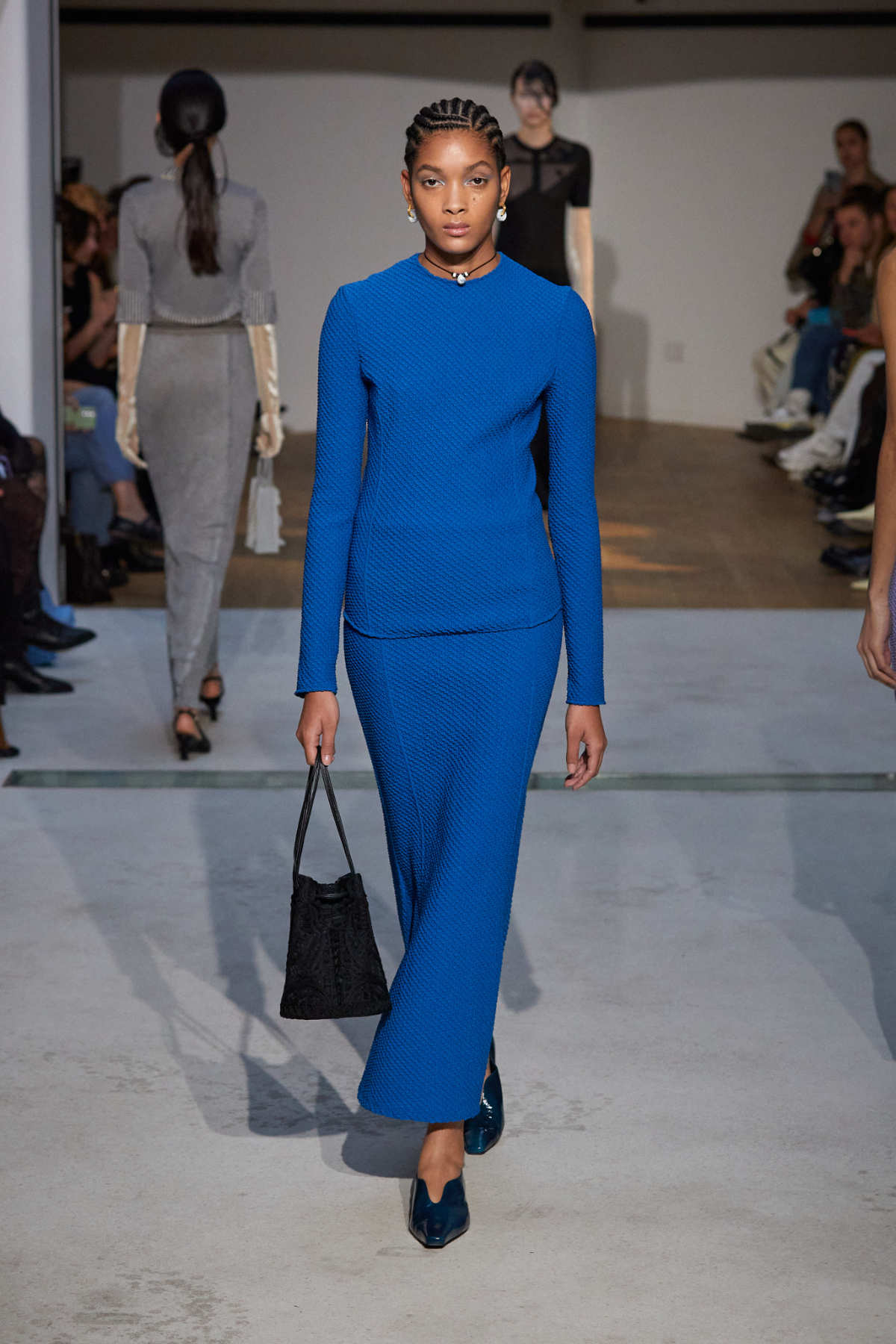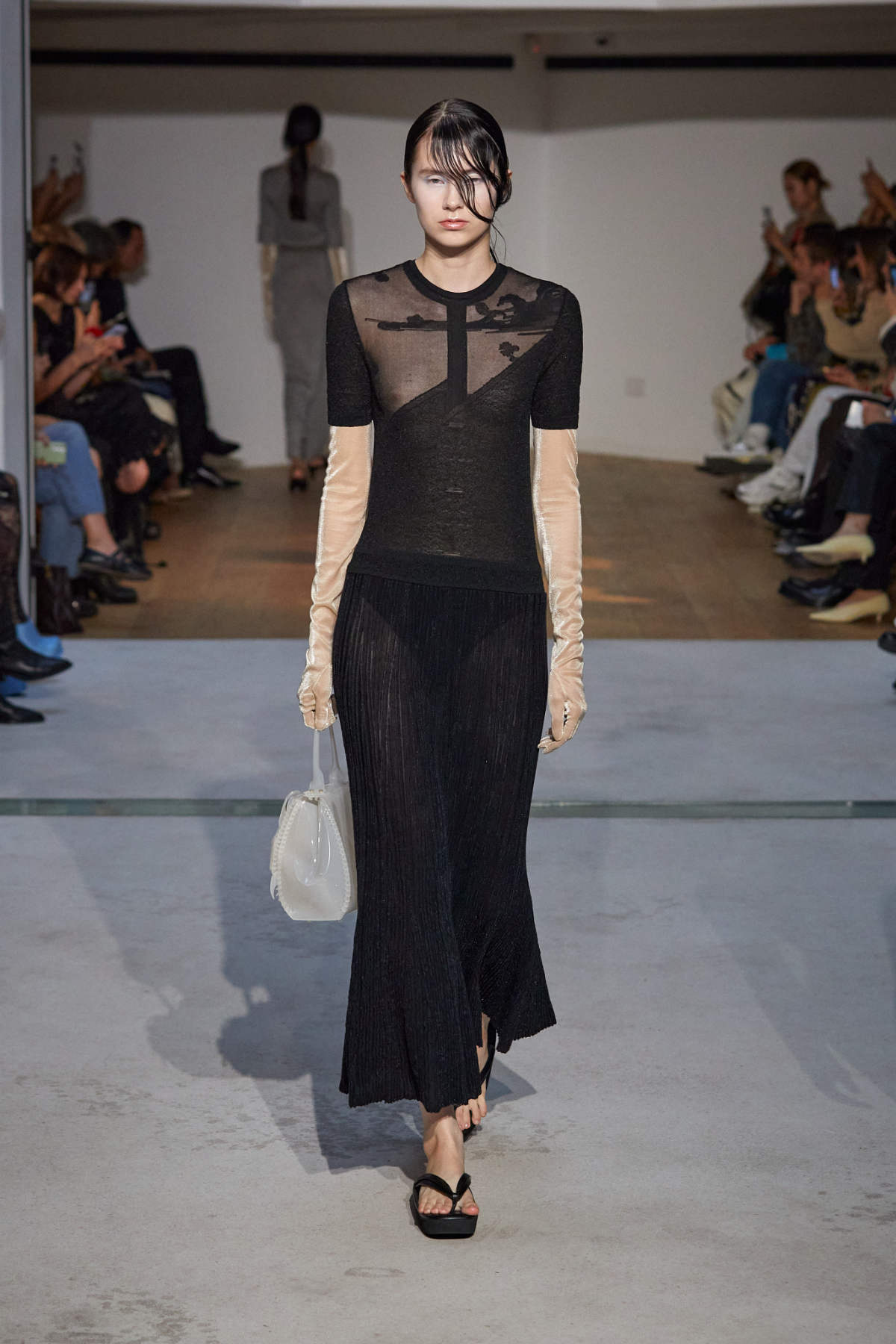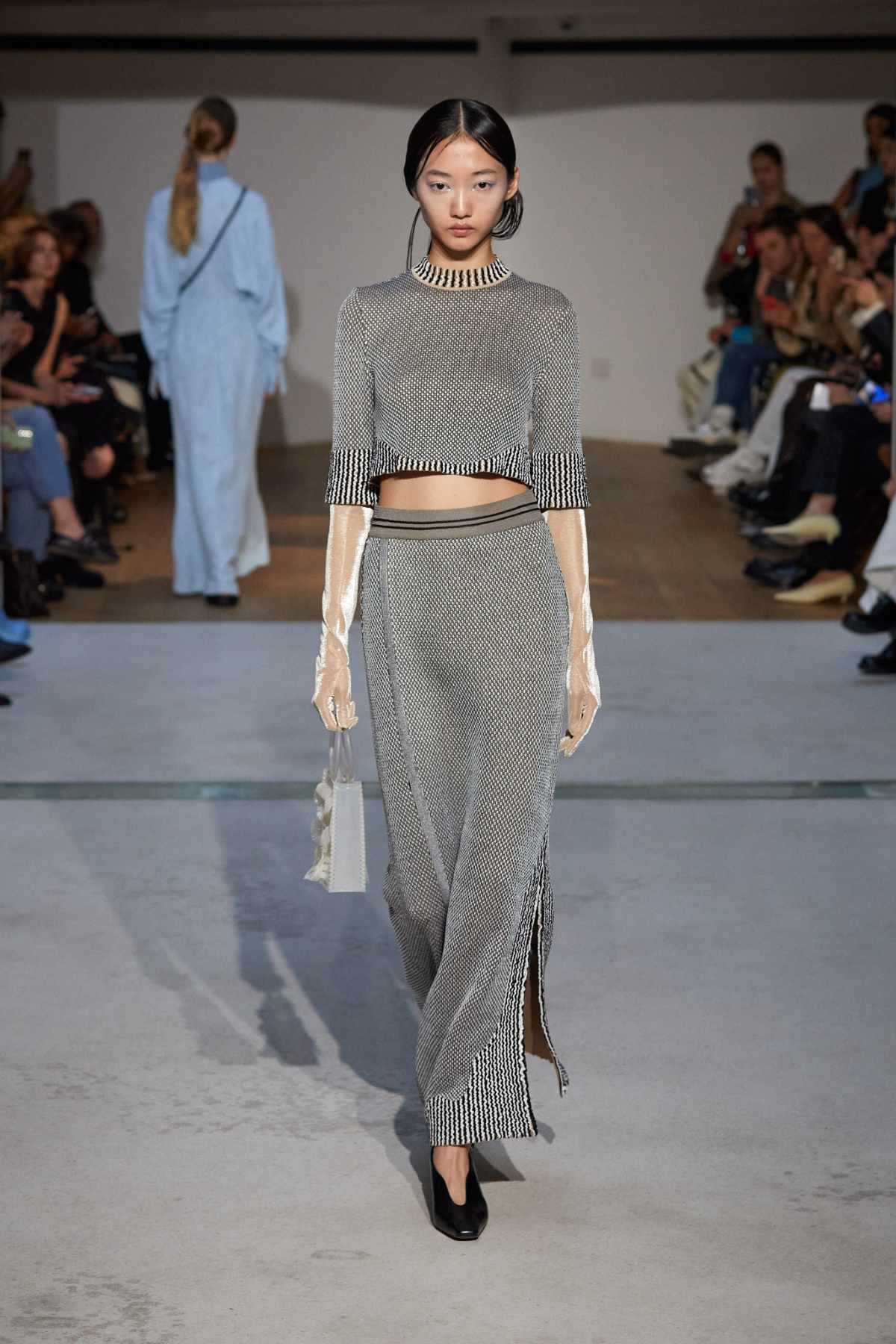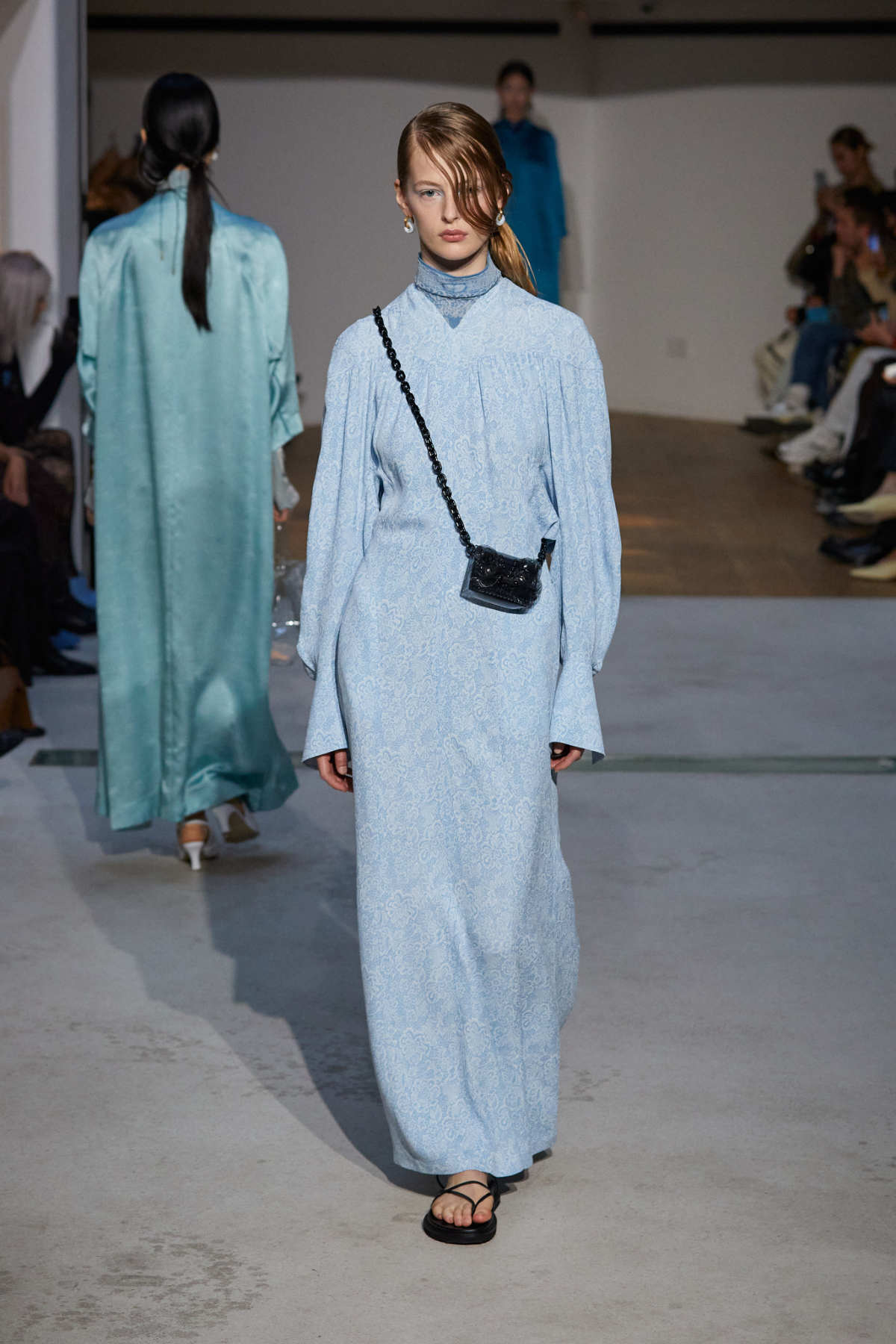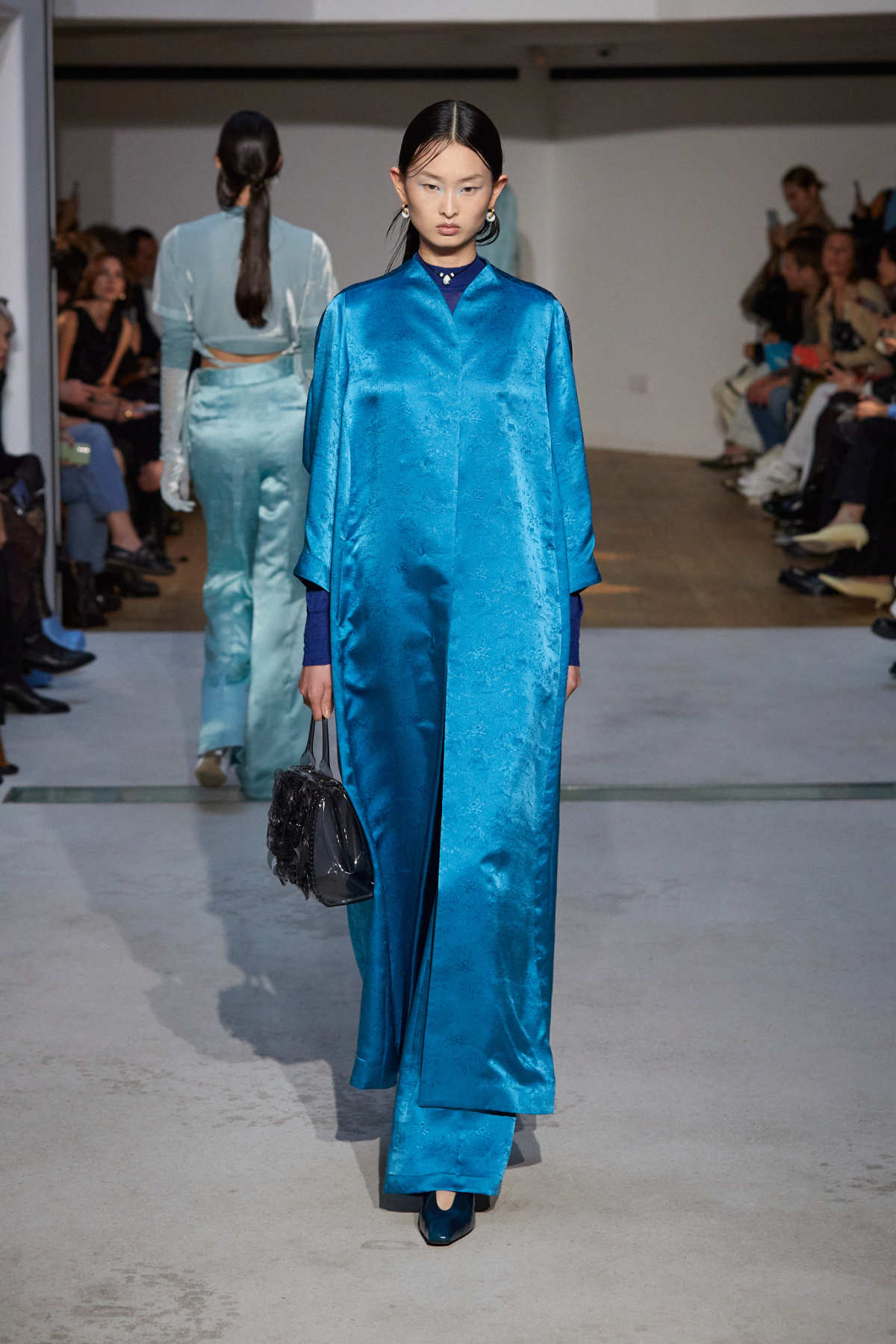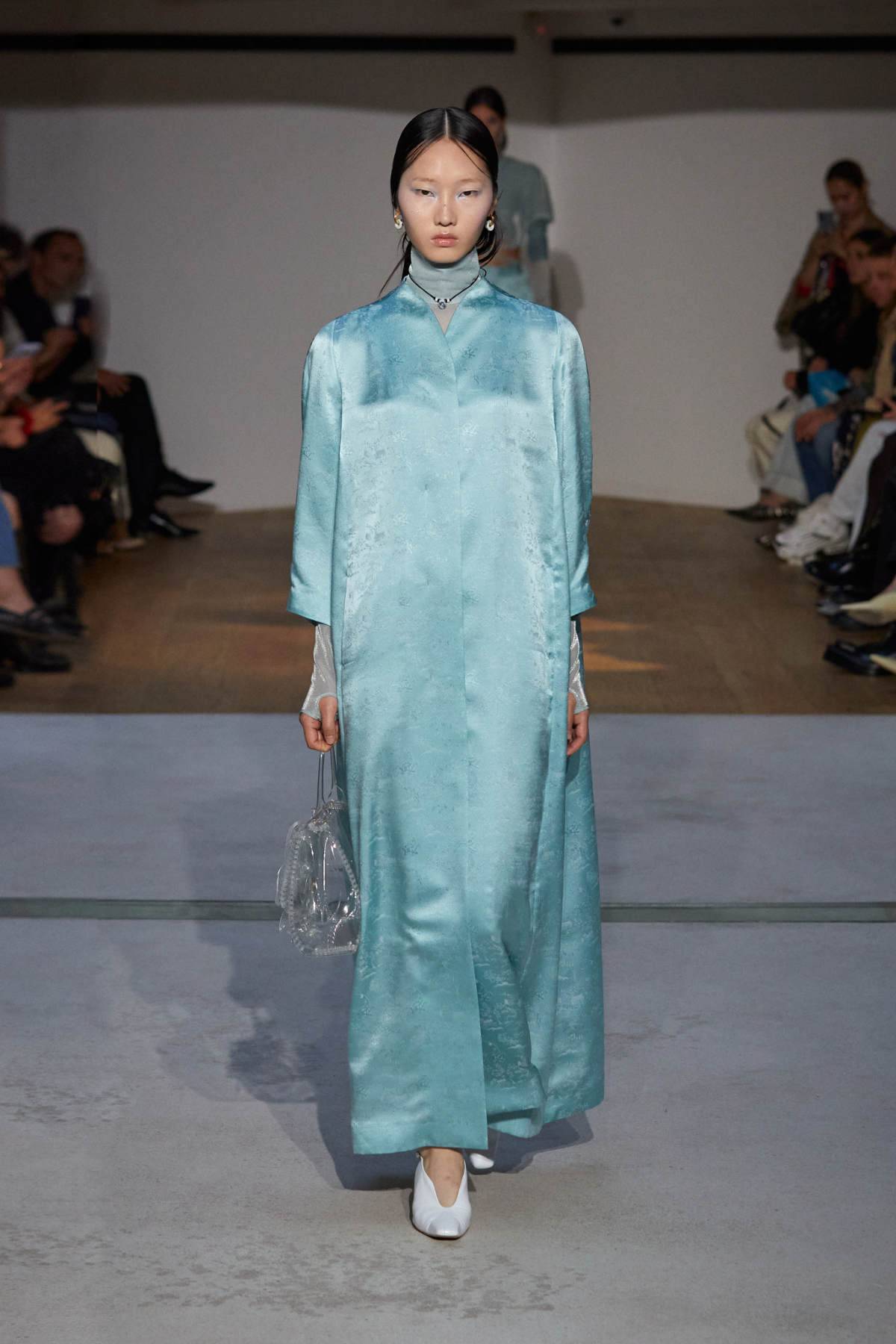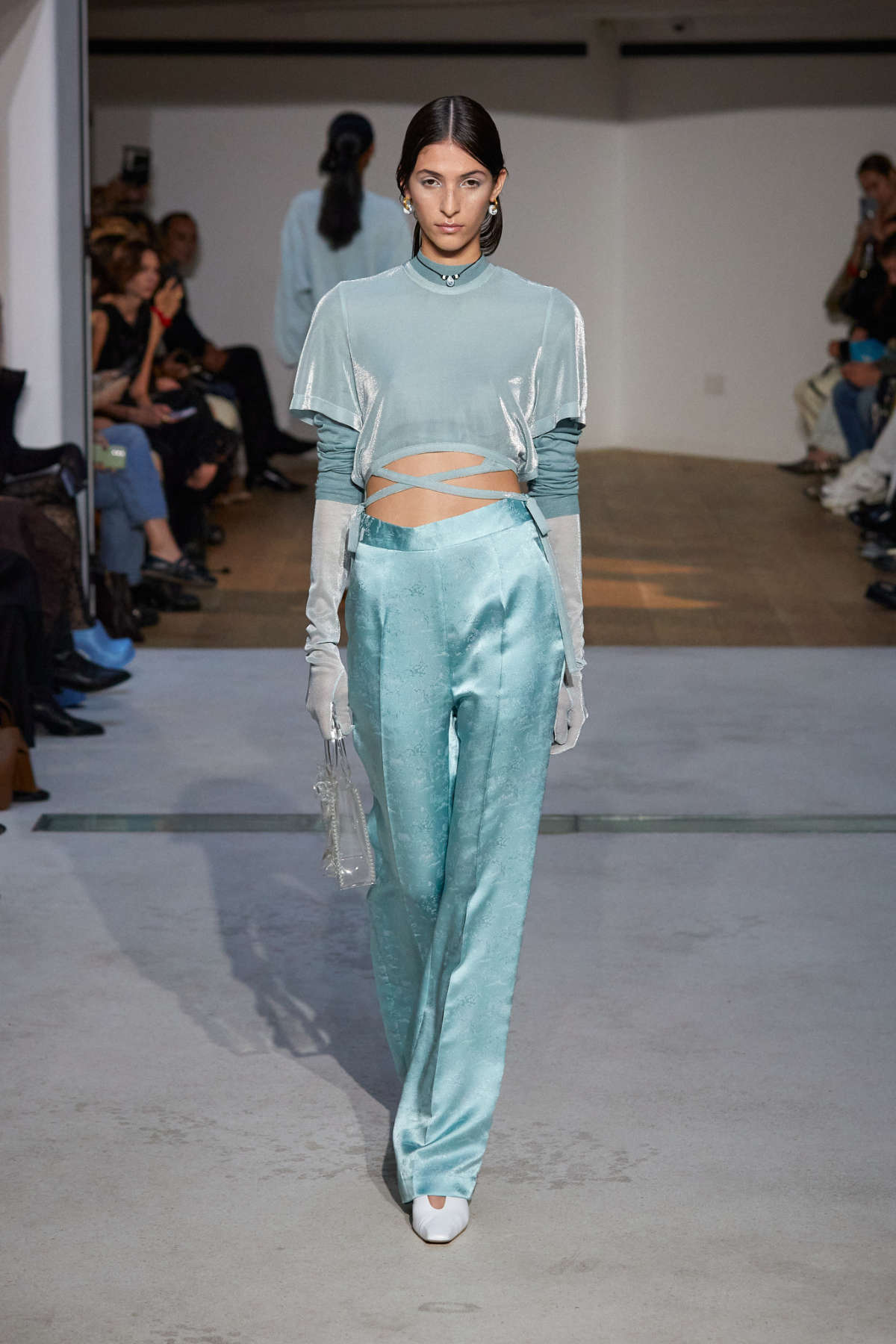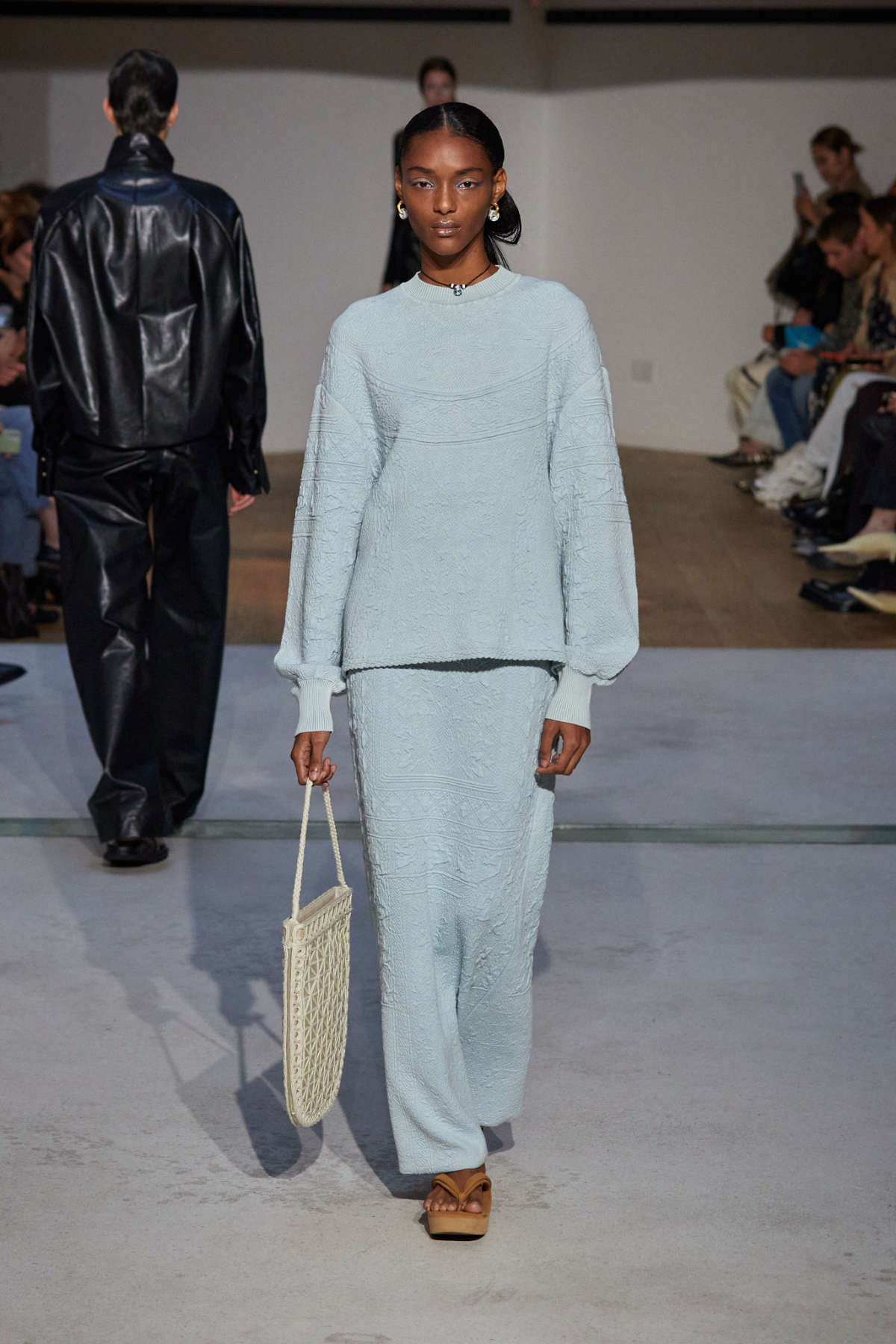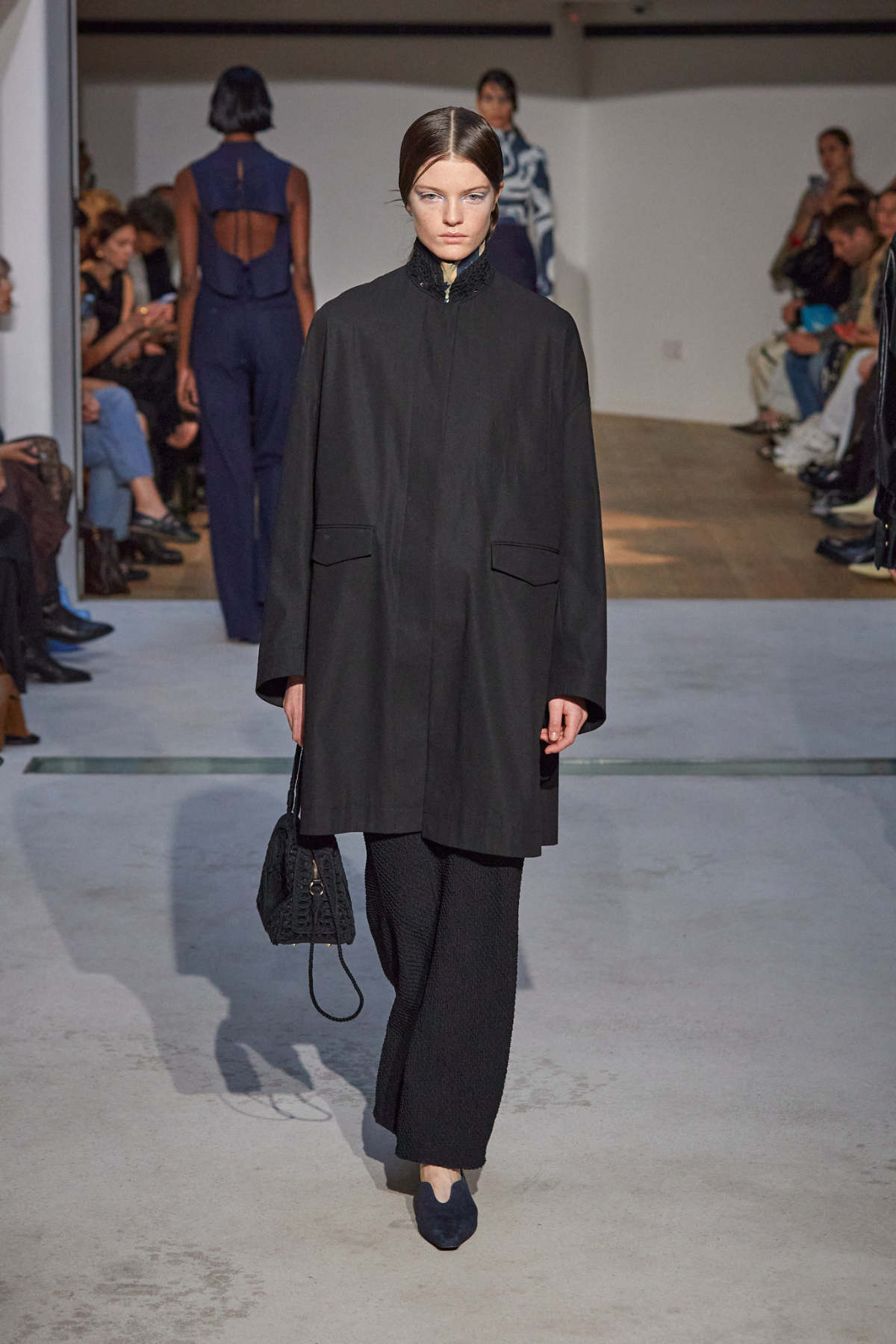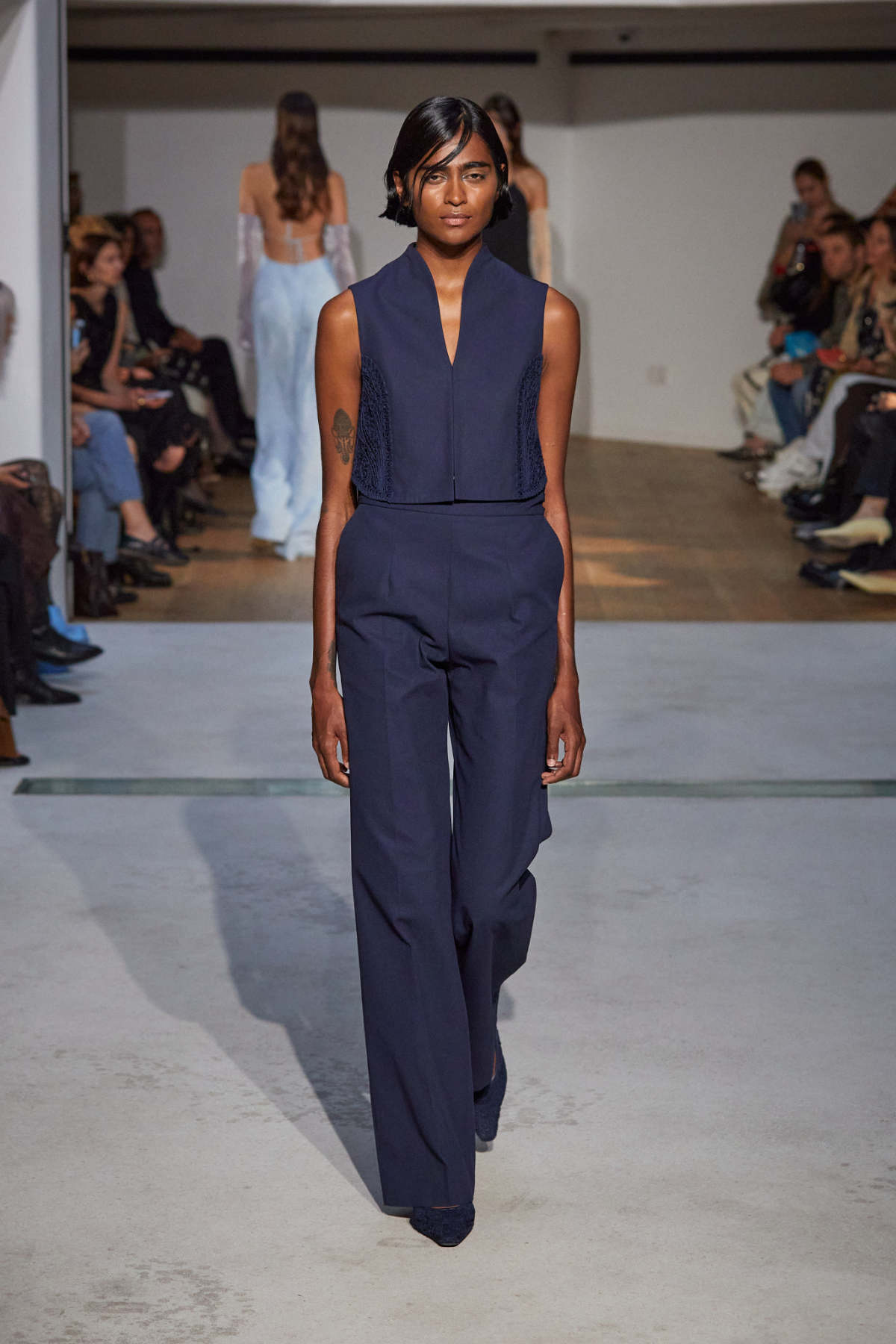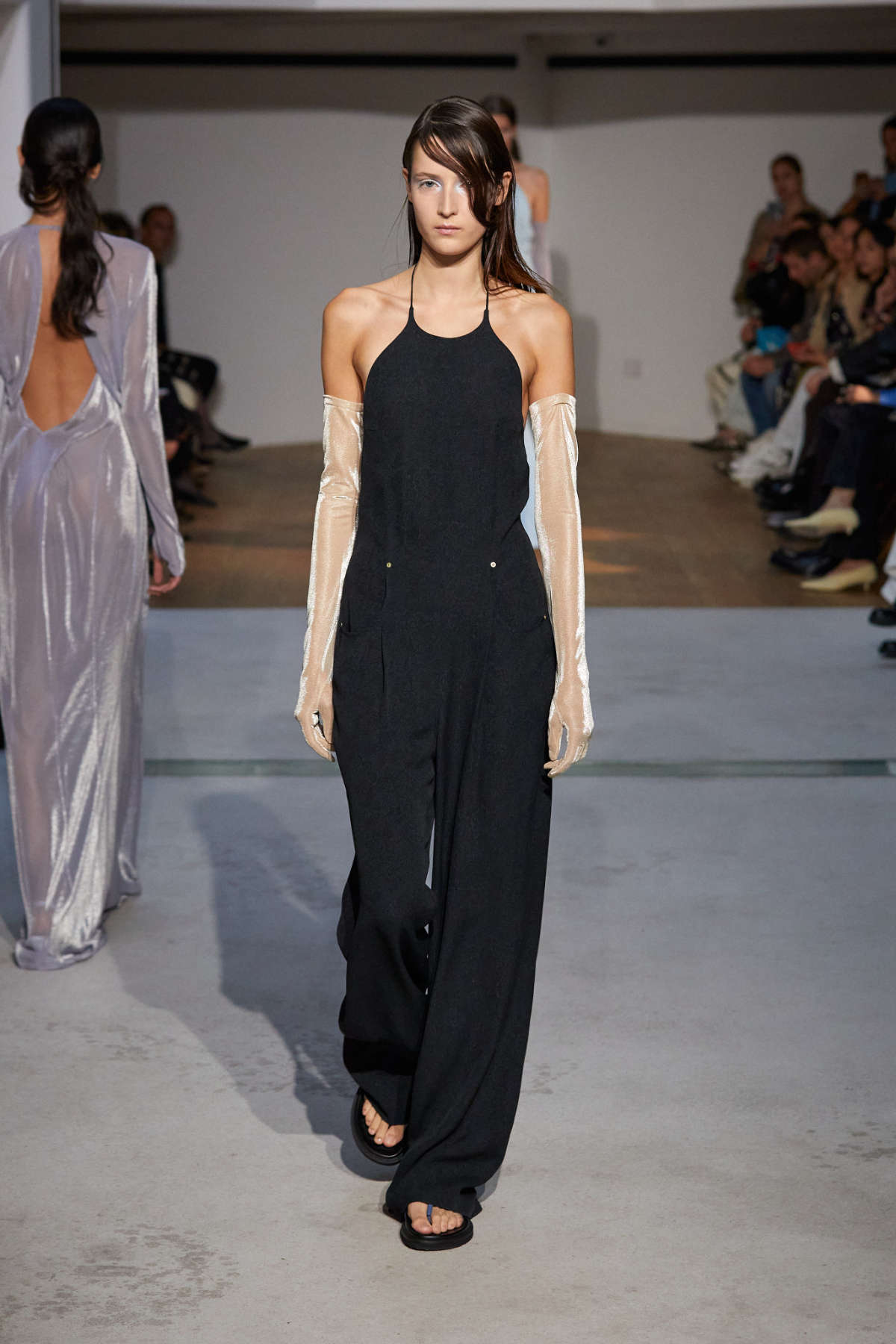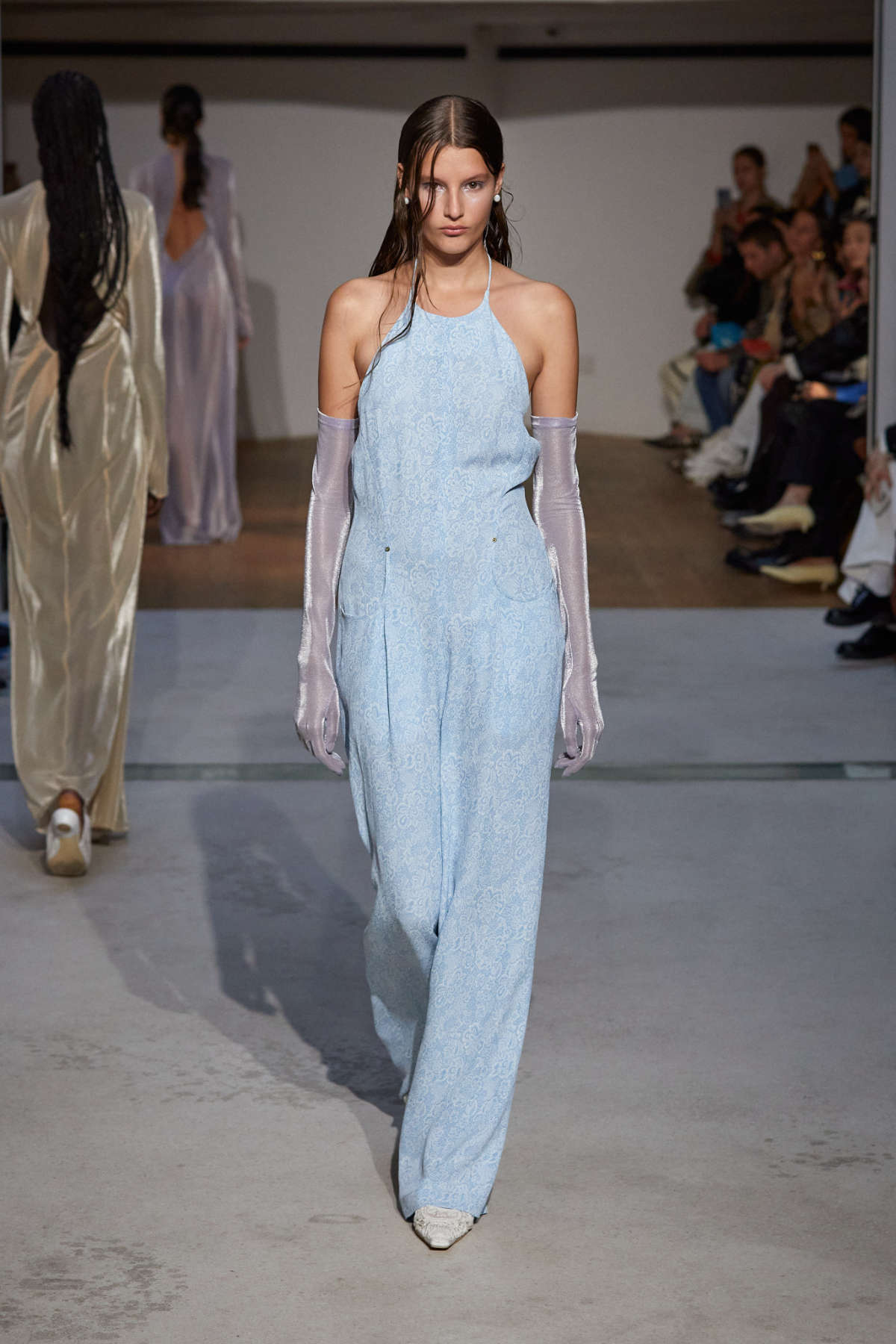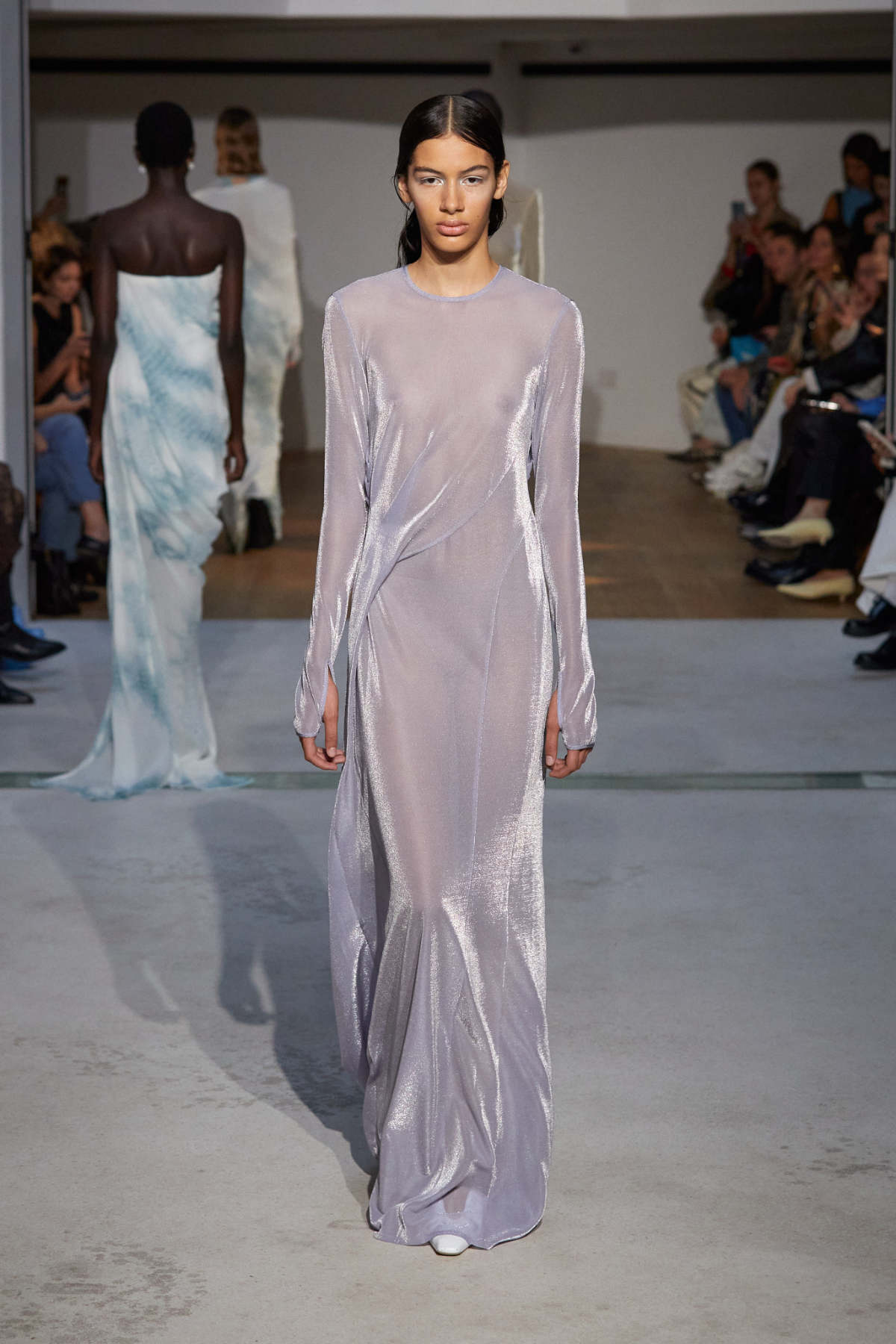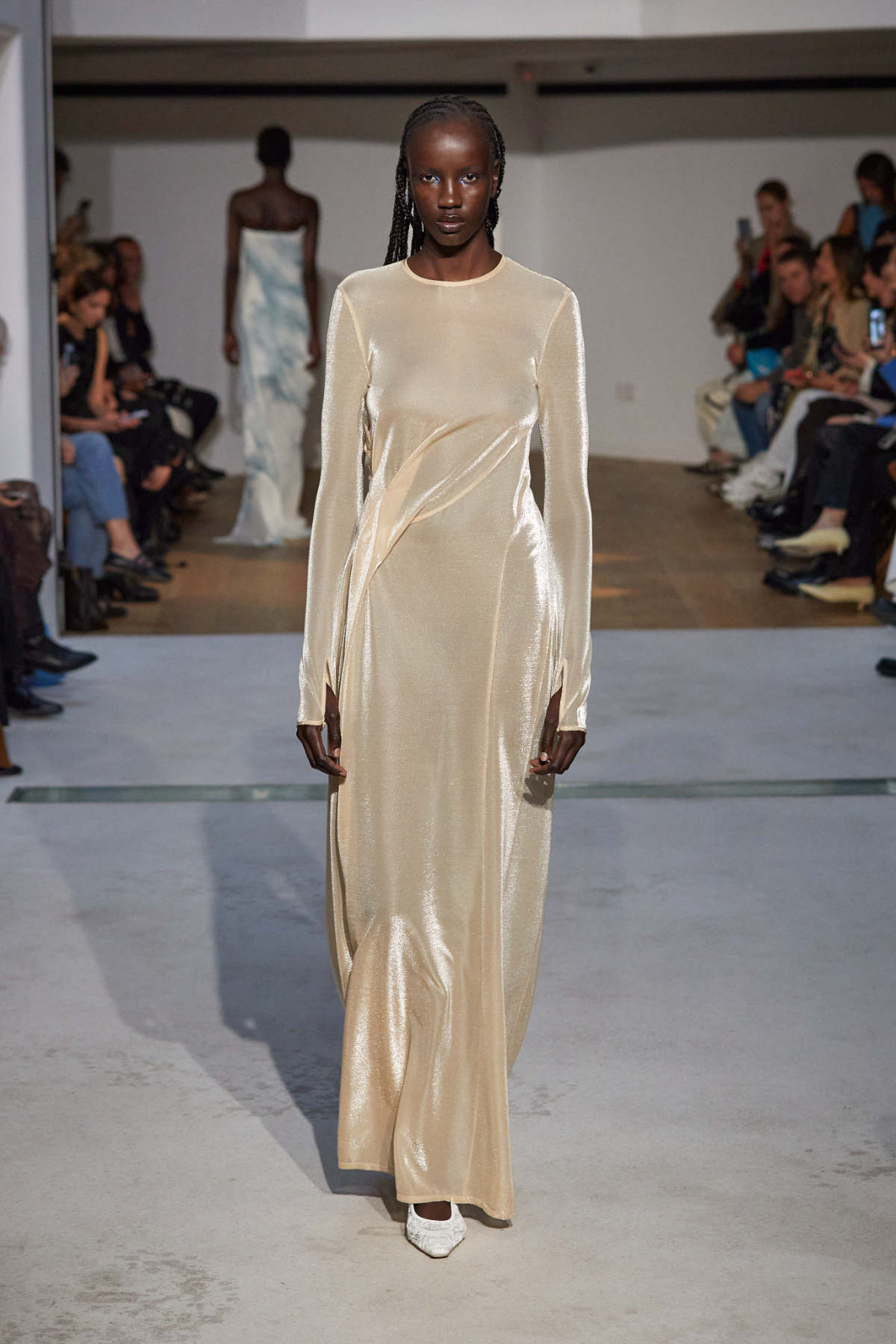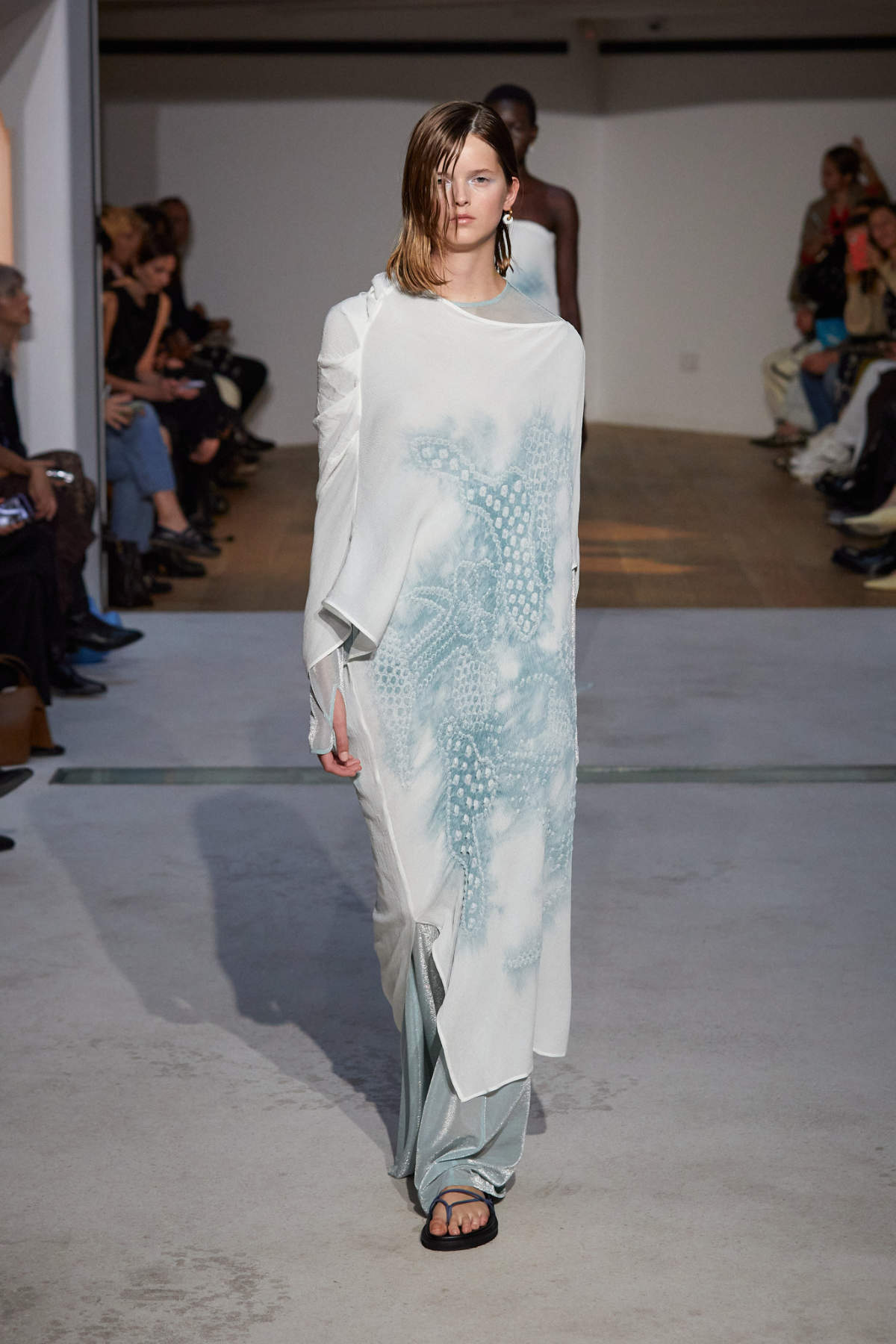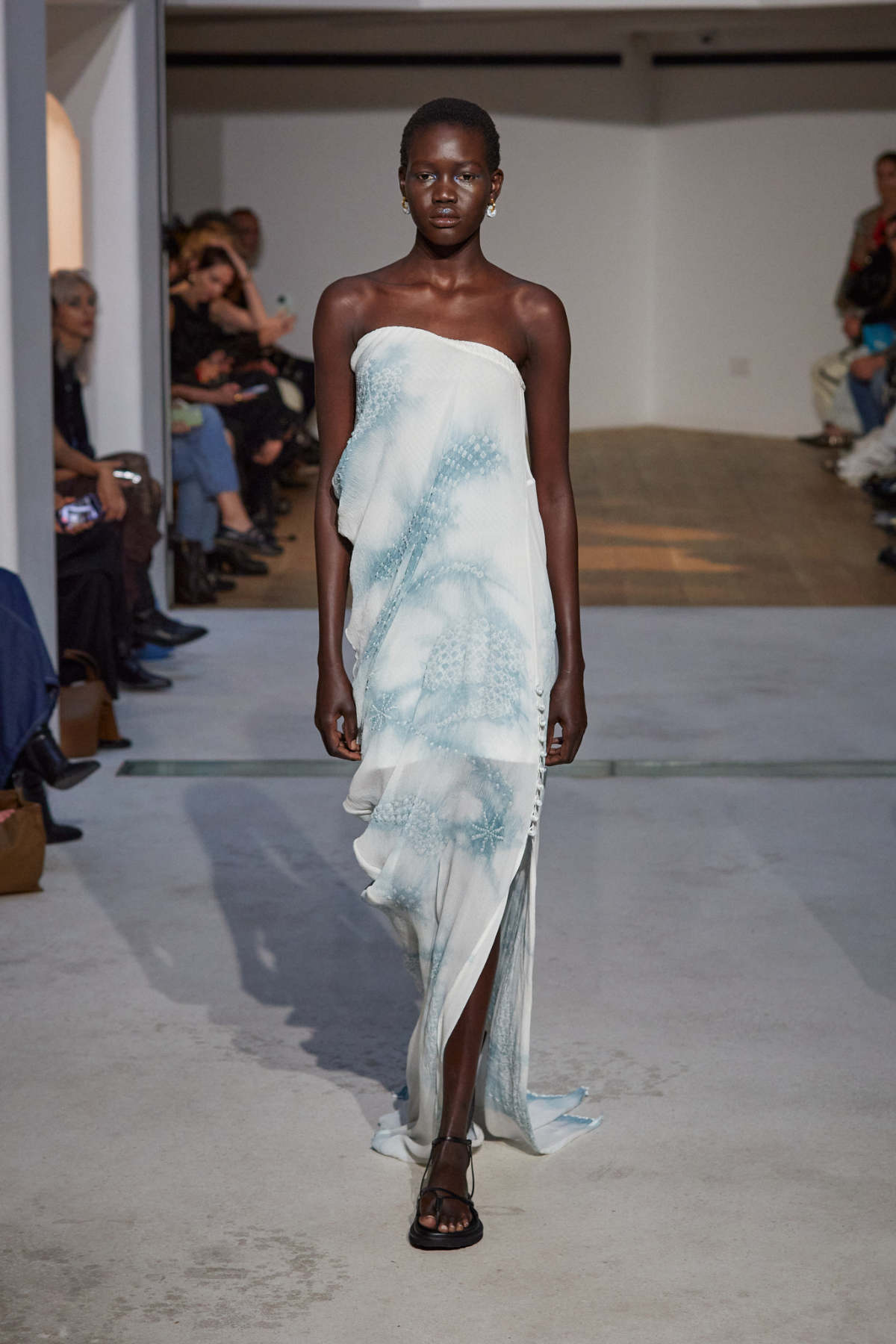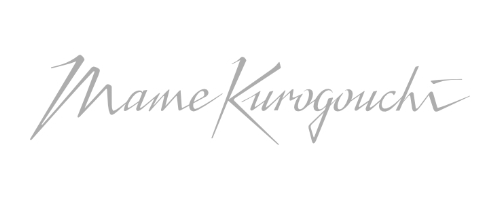Mame Kurogouchi Brand
Mame Kurogouchi Presents Its New Spring/Summer 2024 Collection: Fragments
Luxferity, 02.11.2023

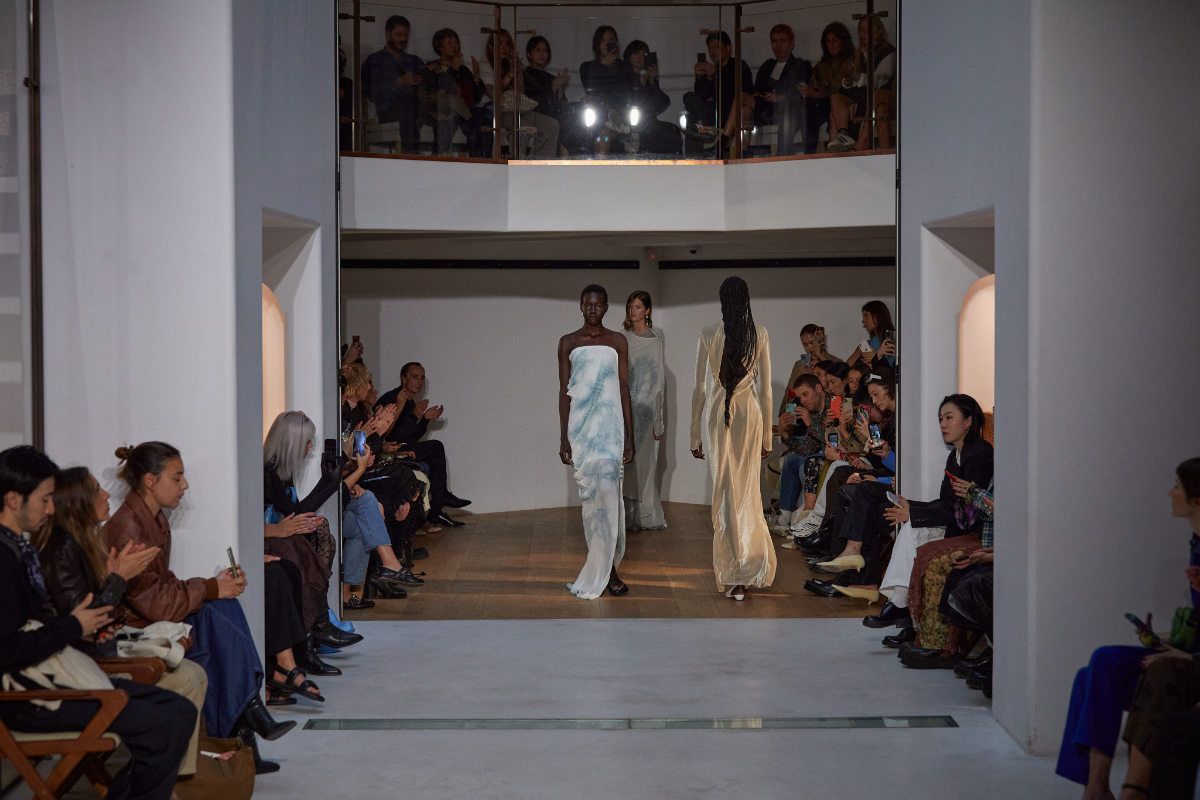
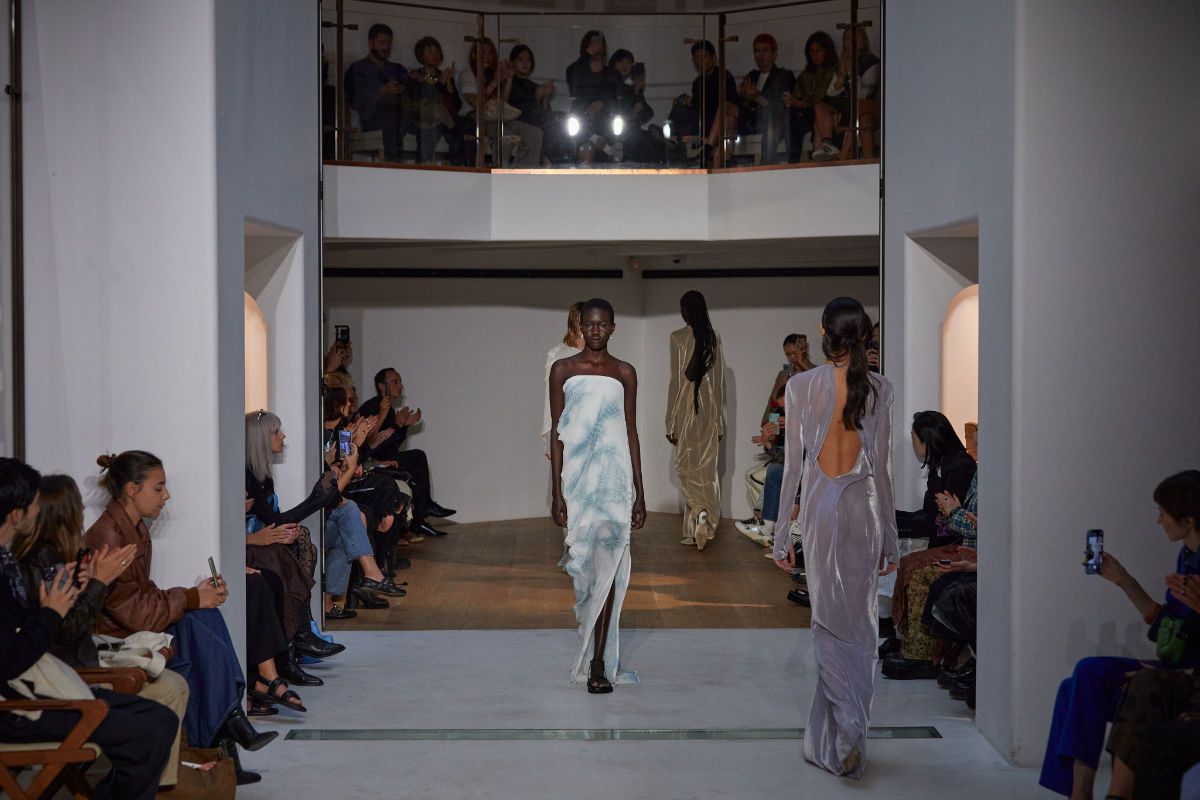
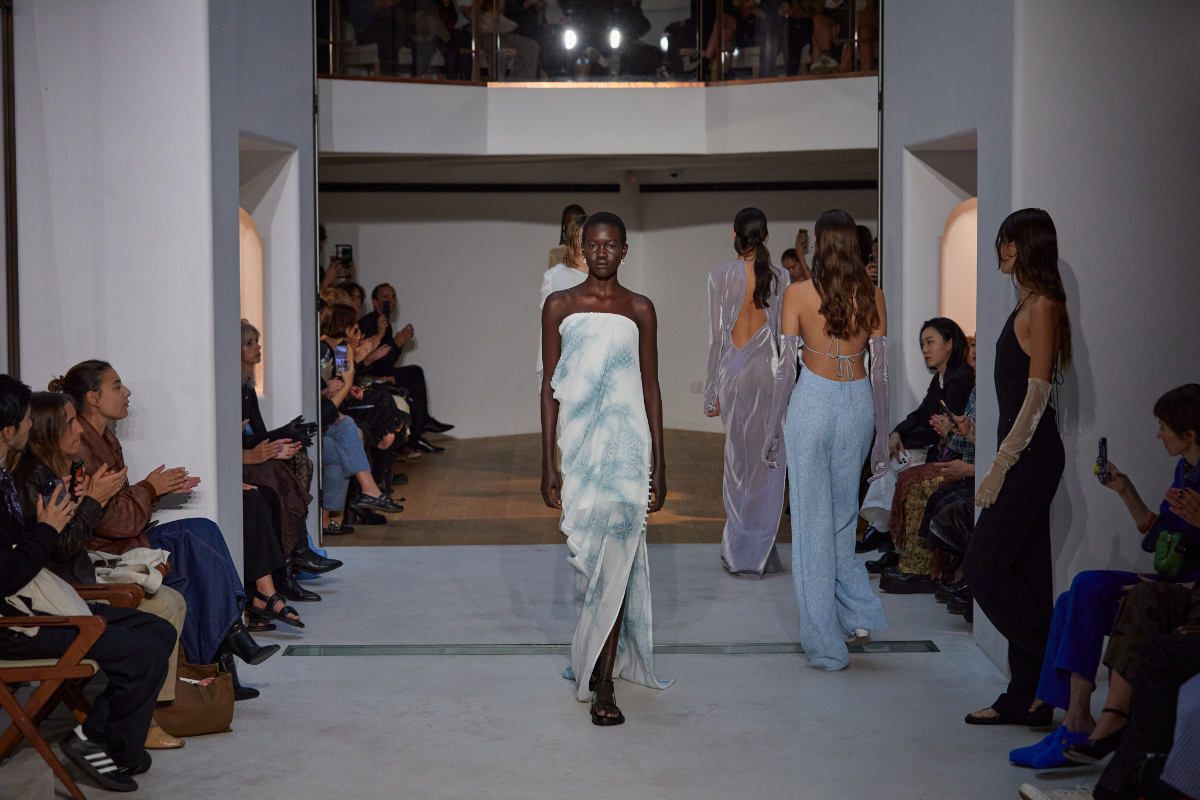
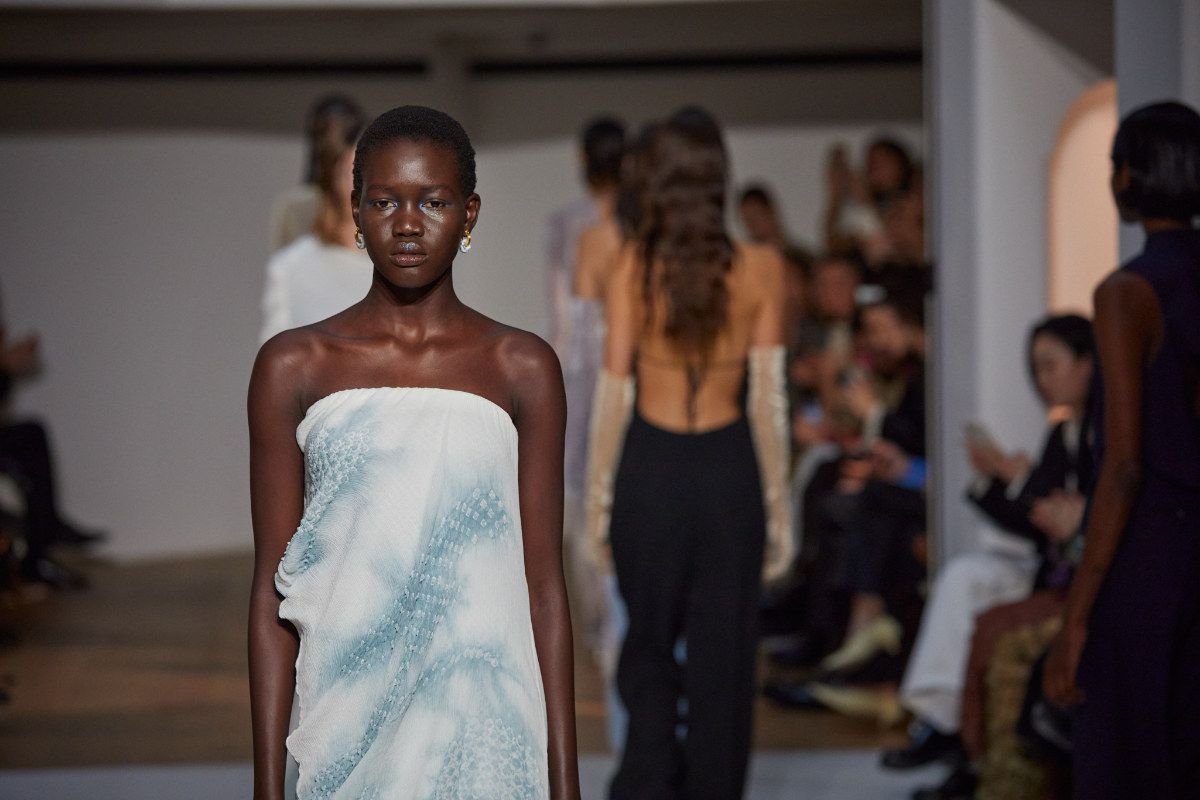
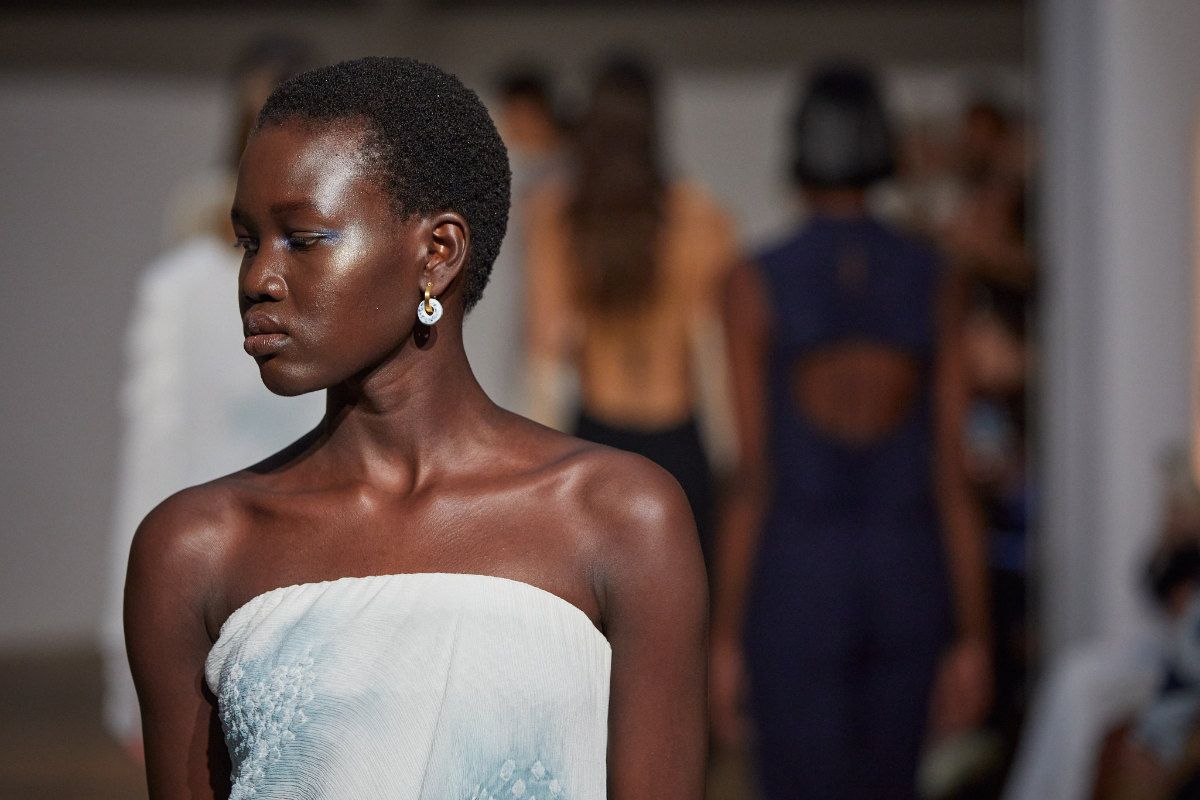
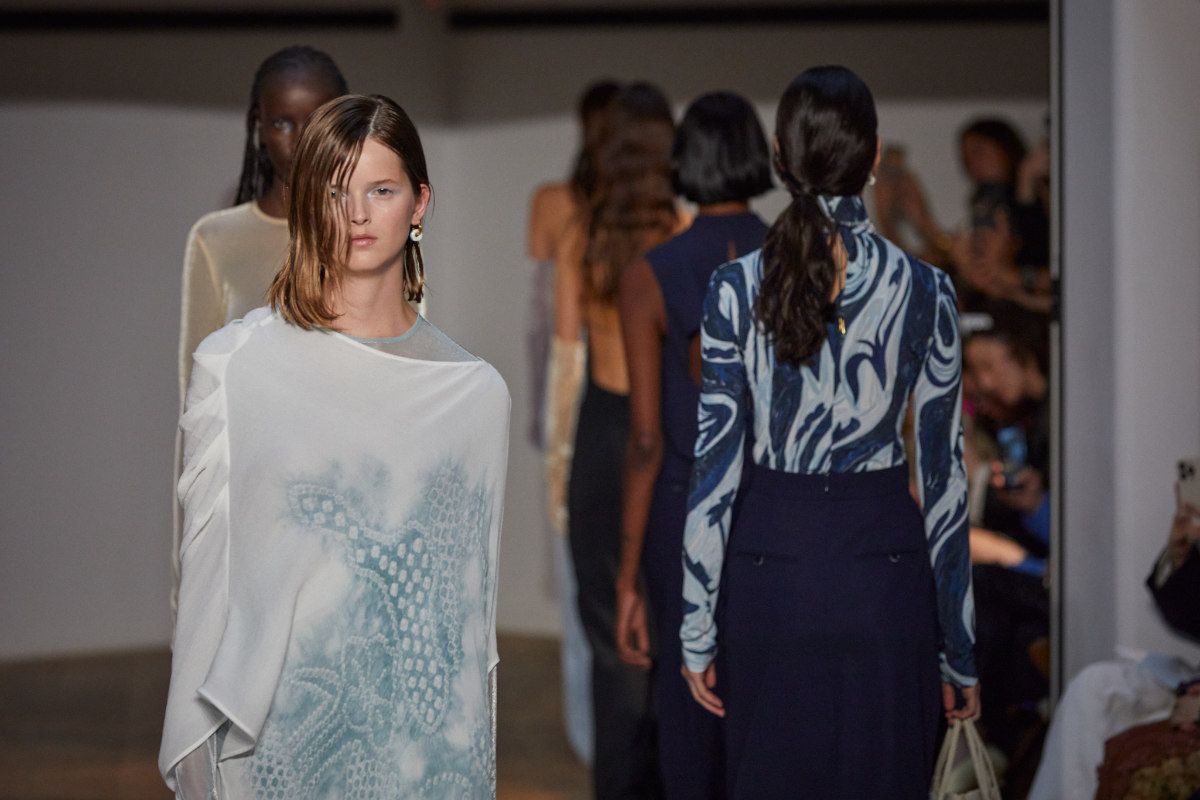
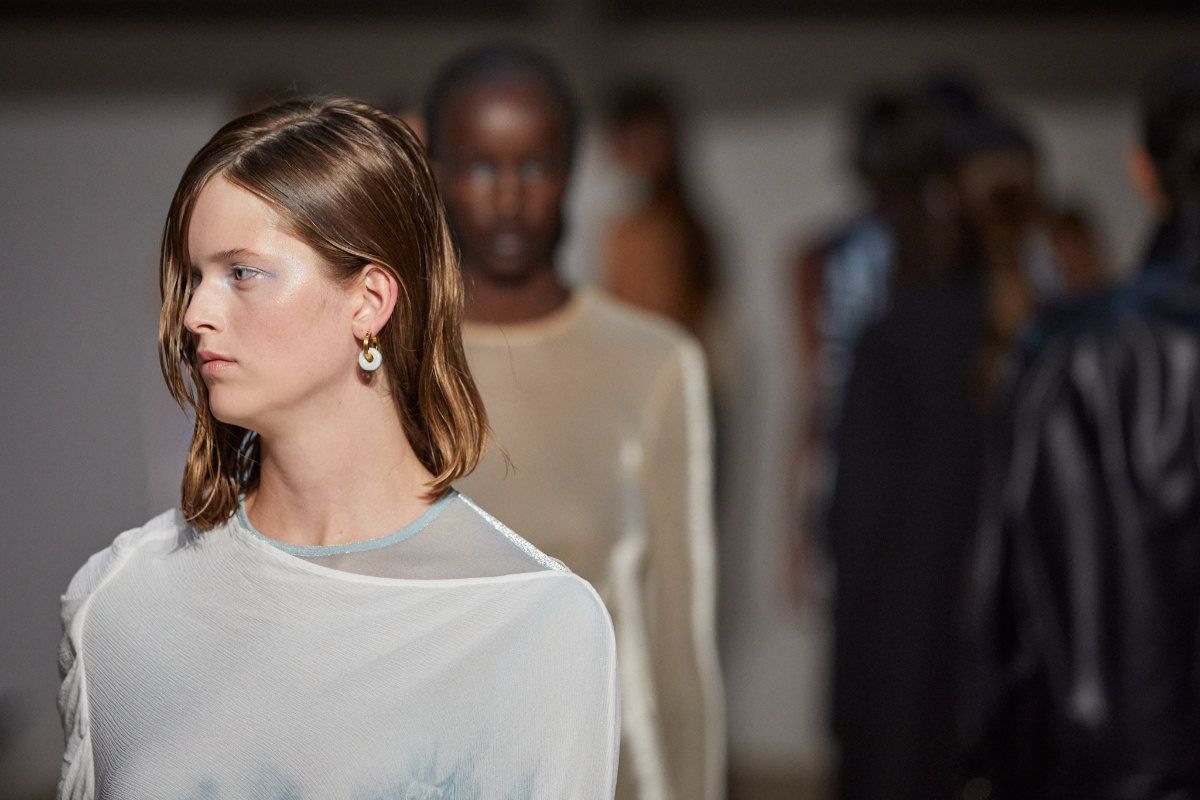
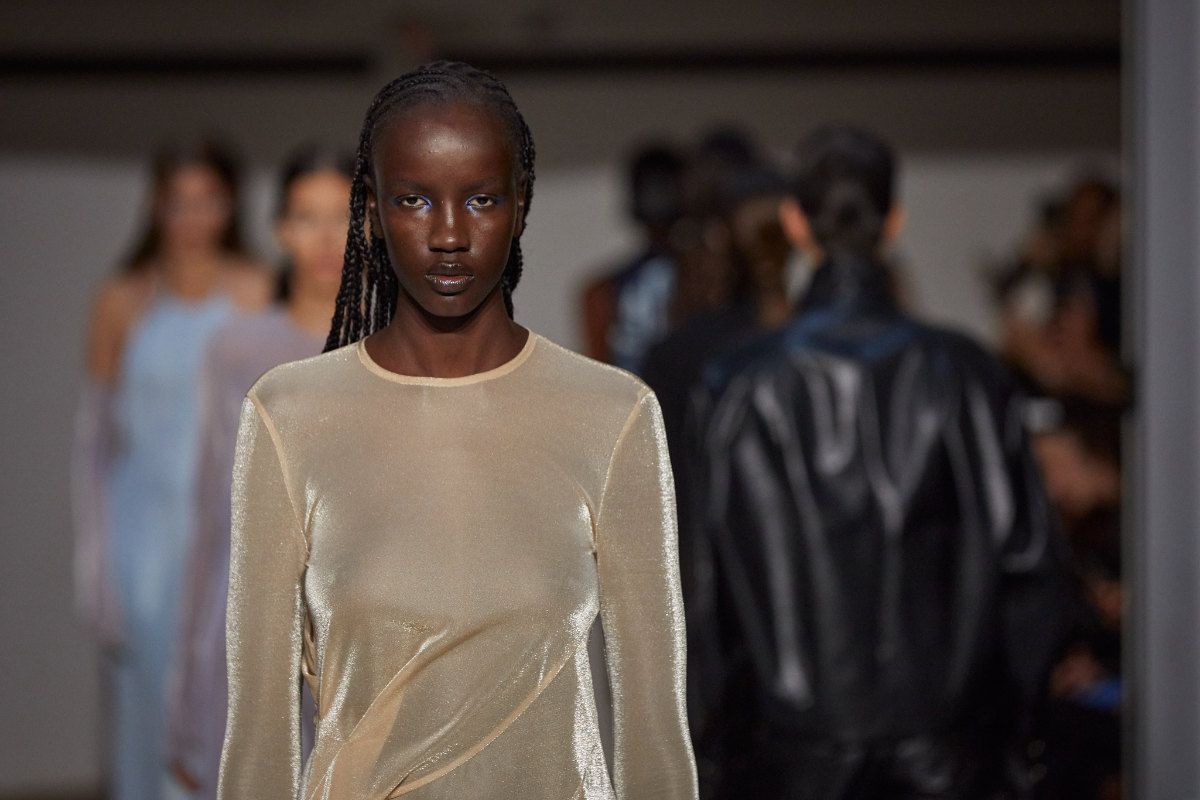
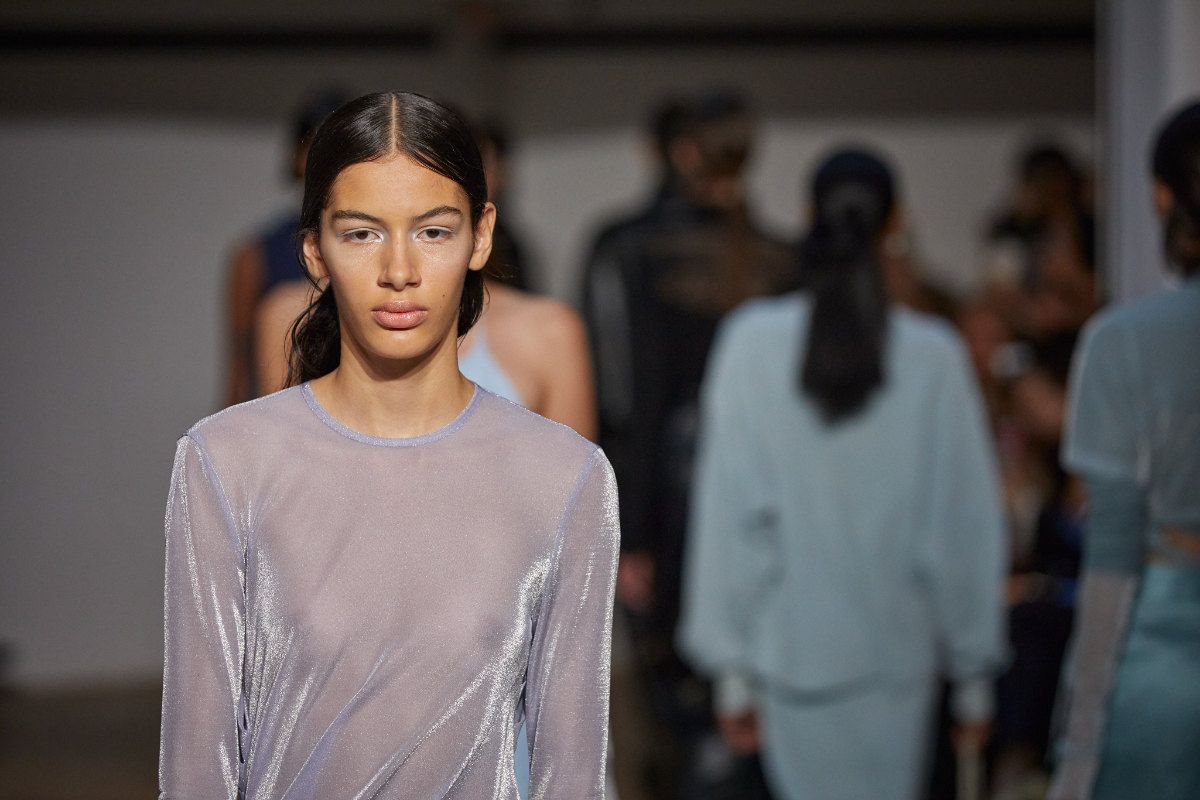

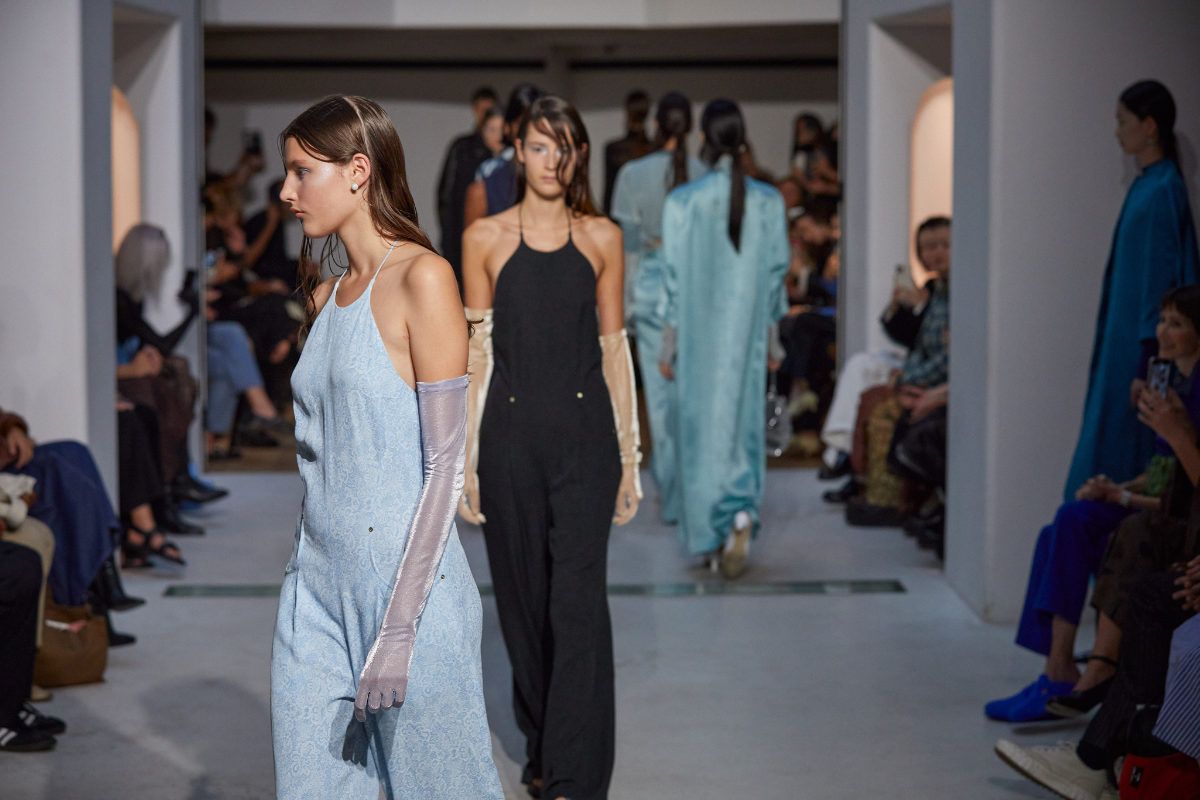
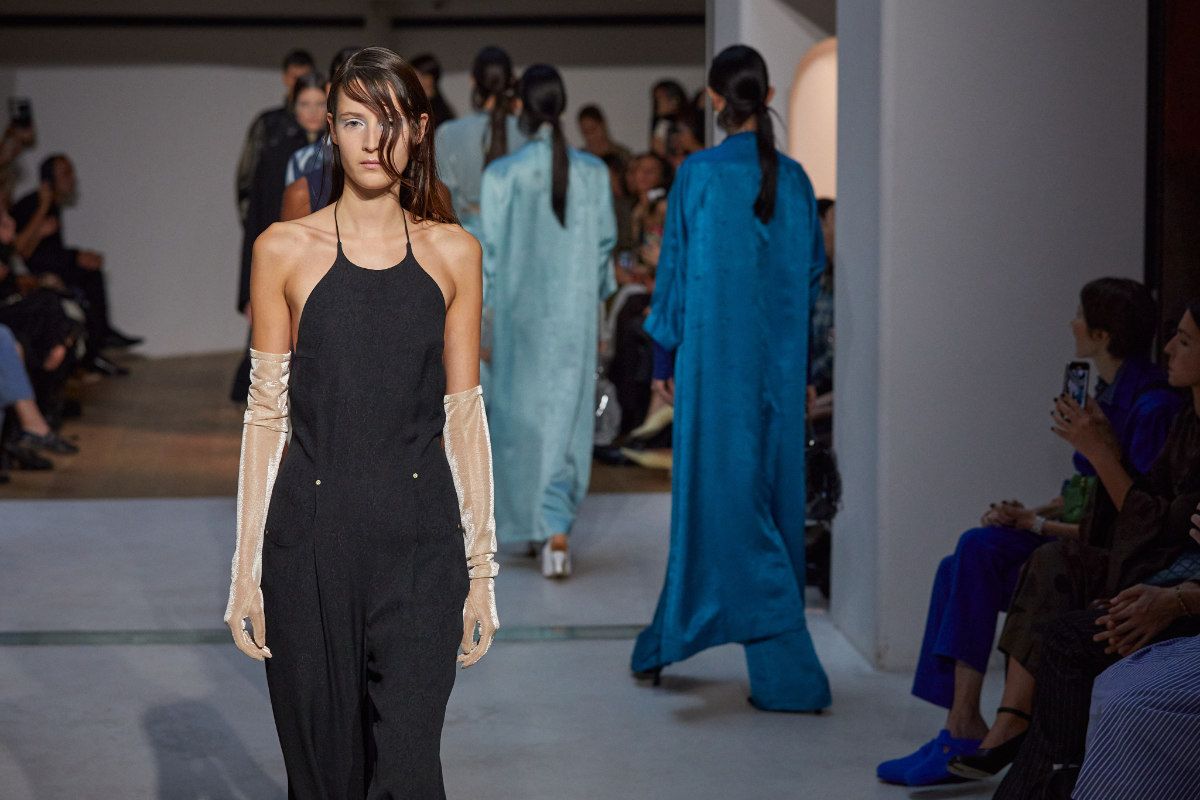
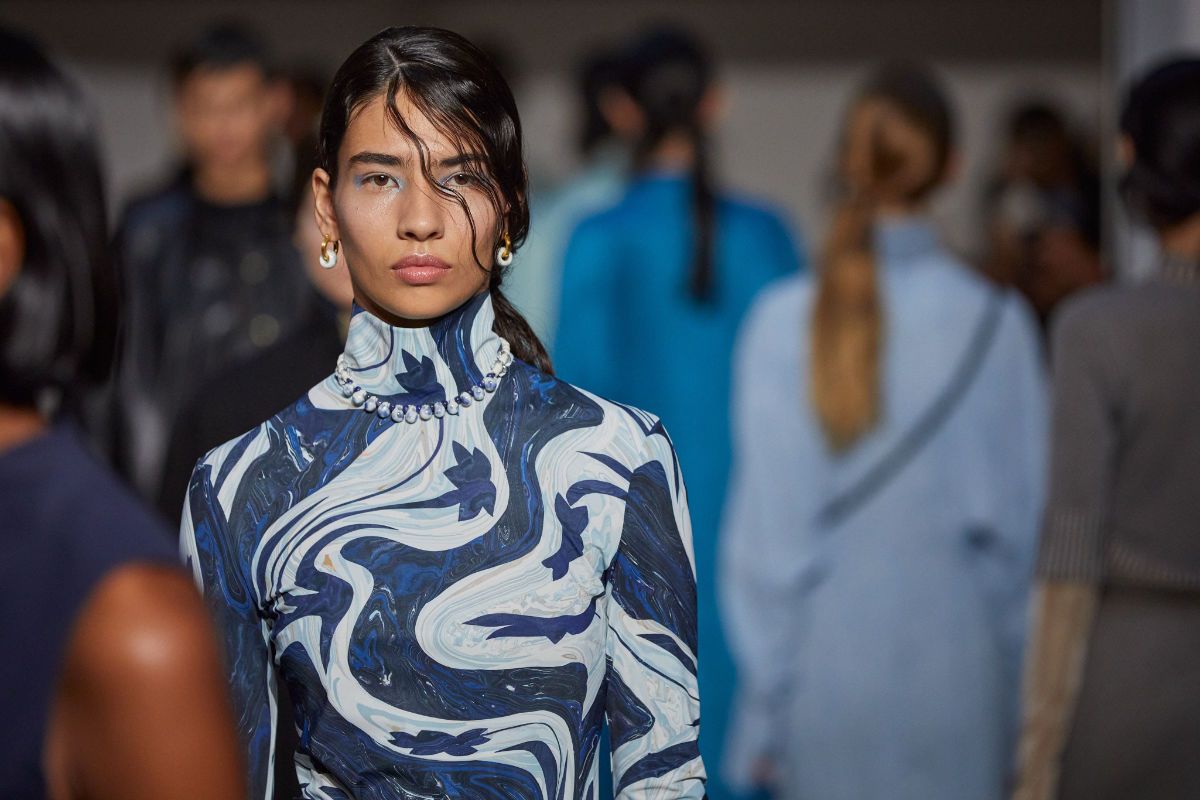
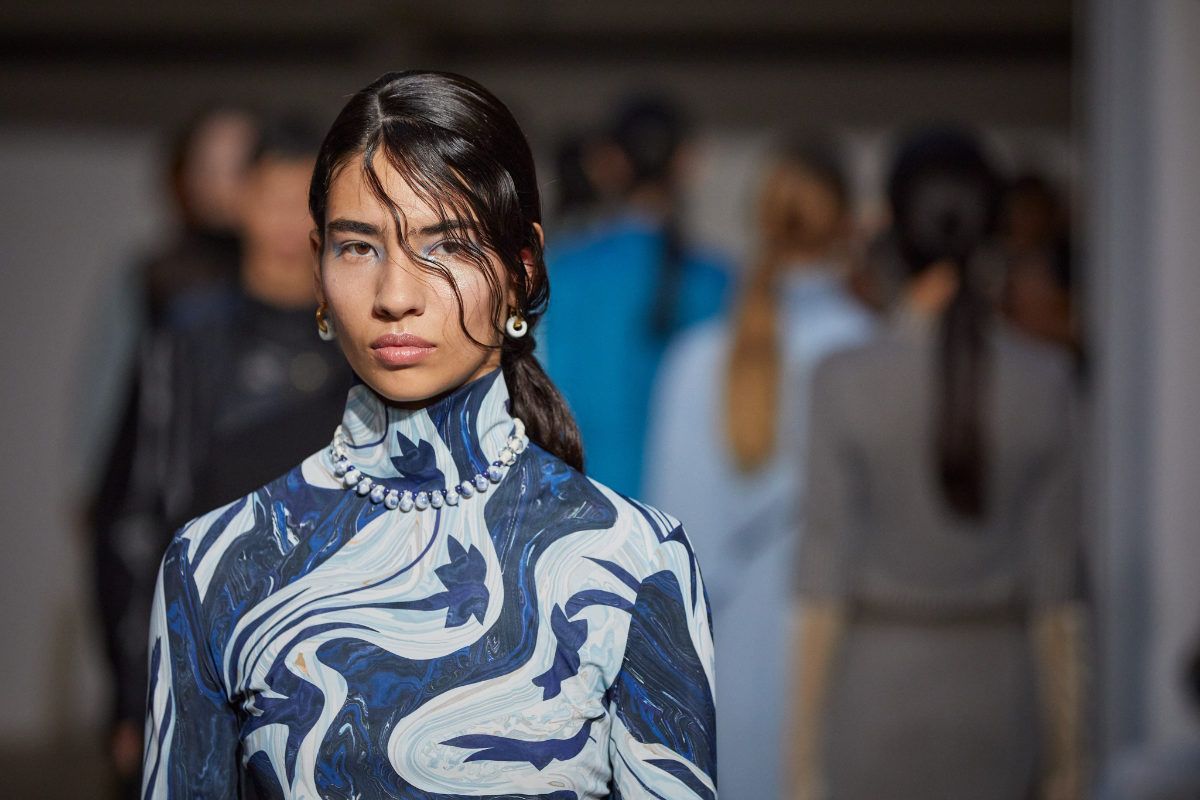
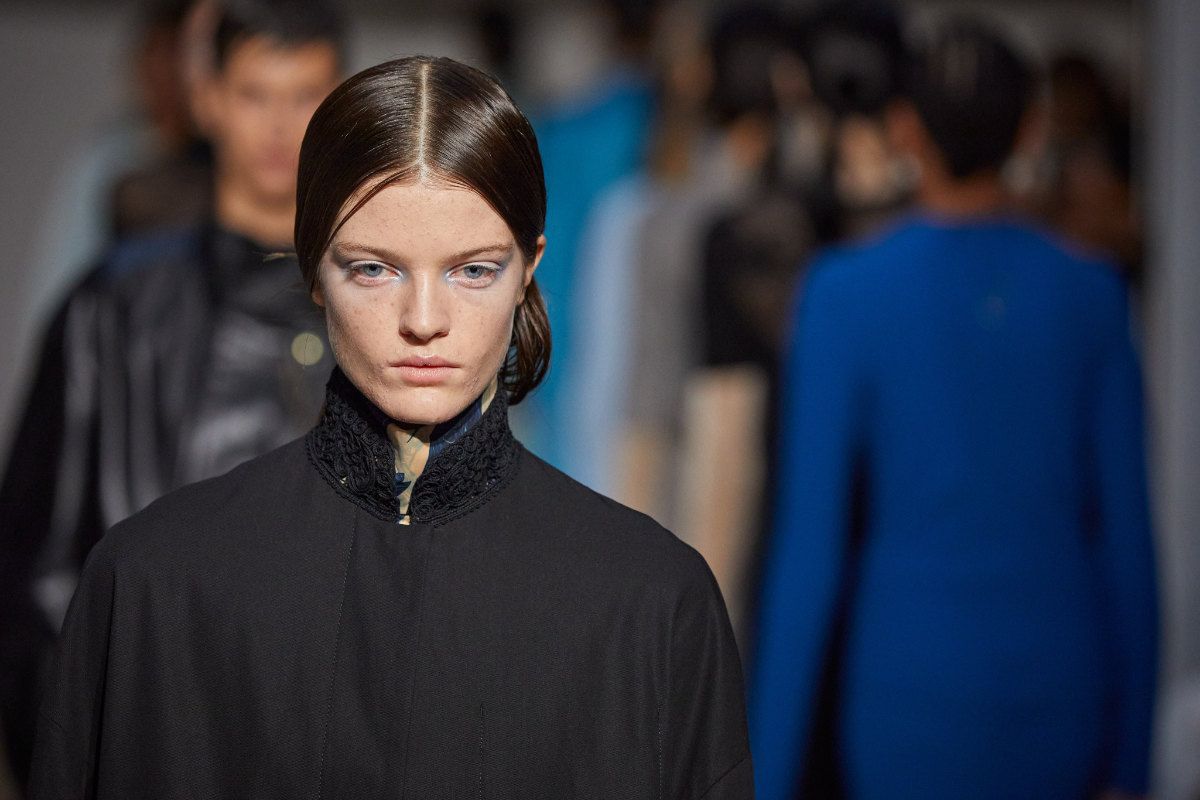
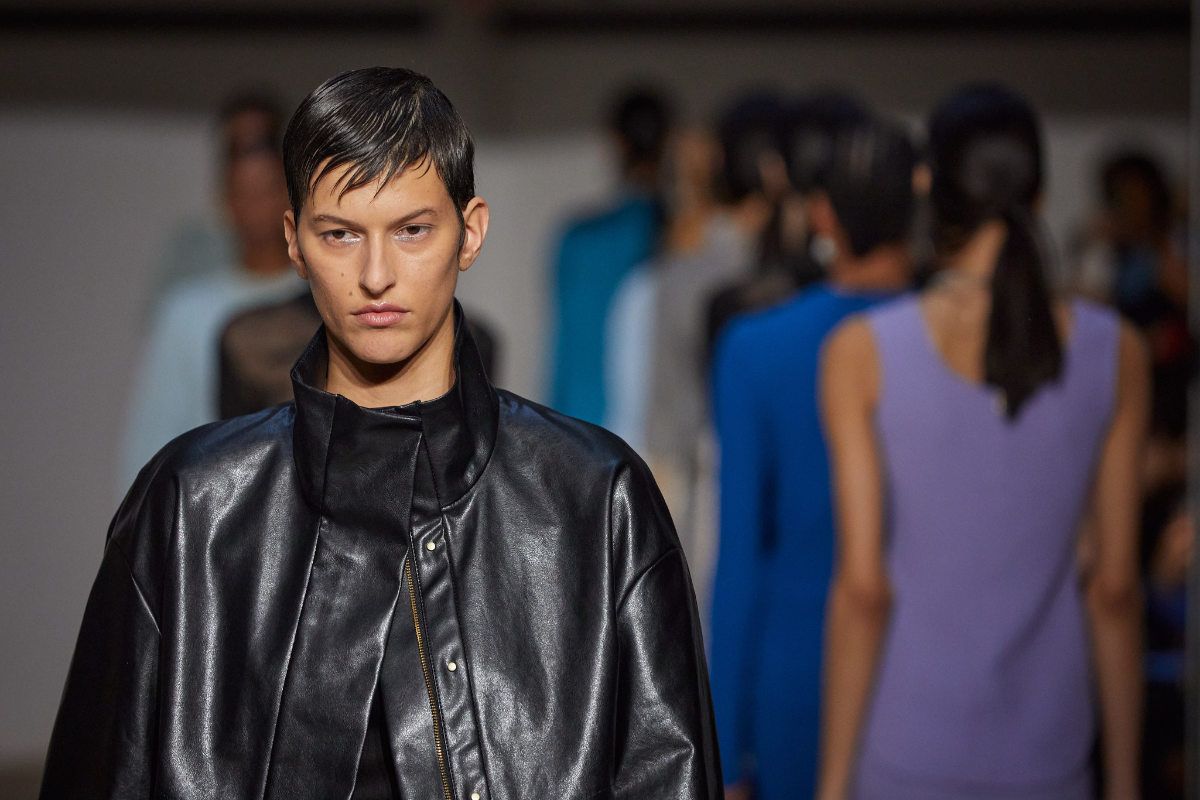

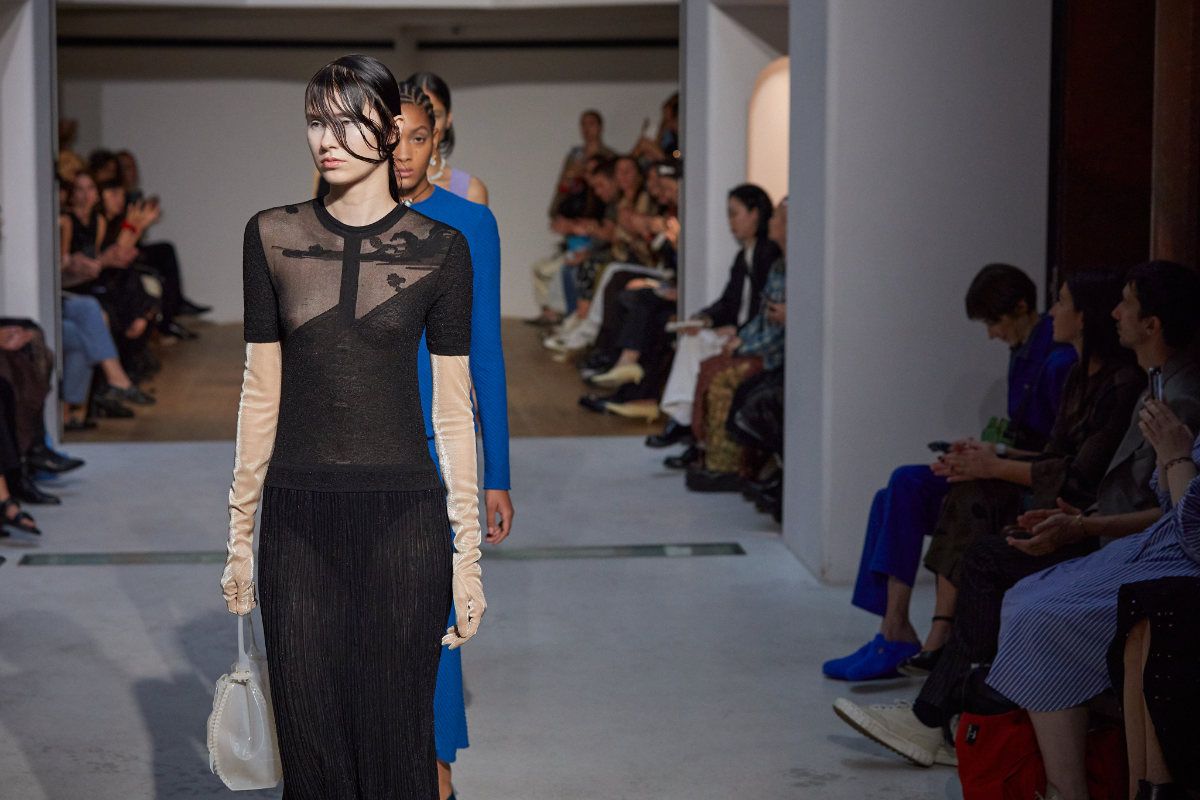
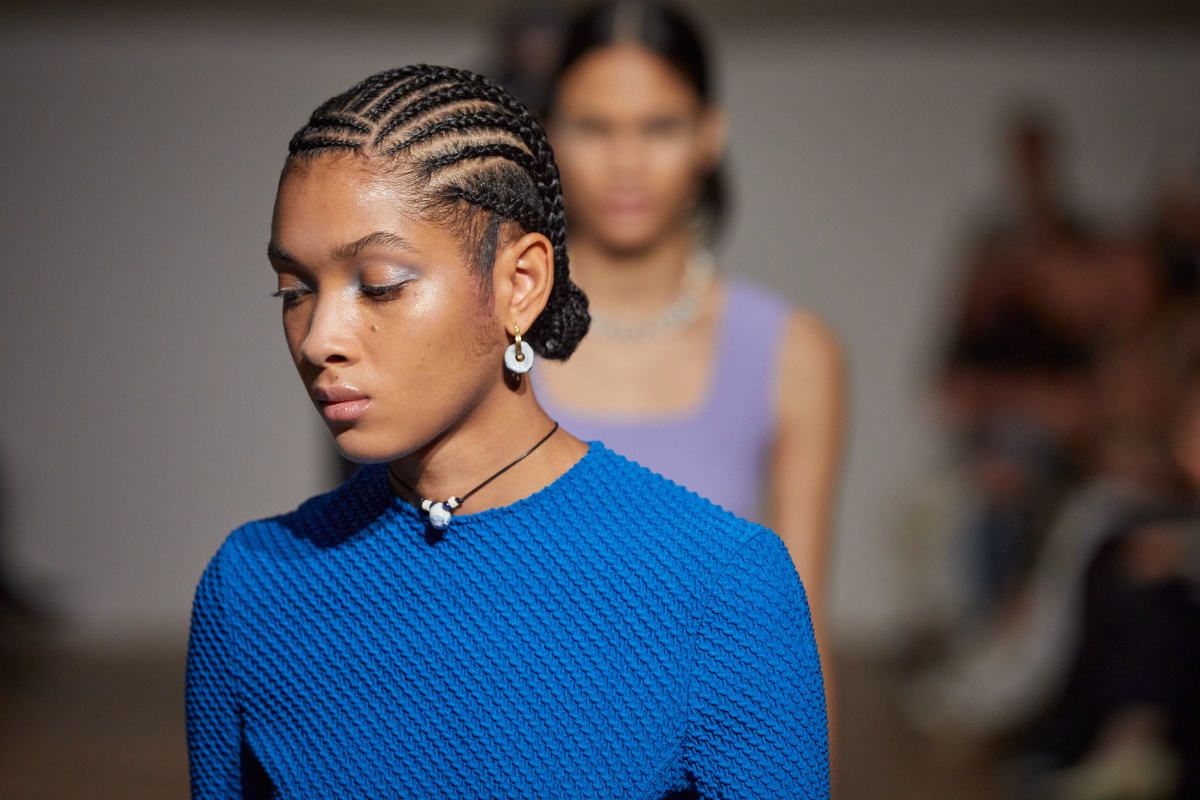
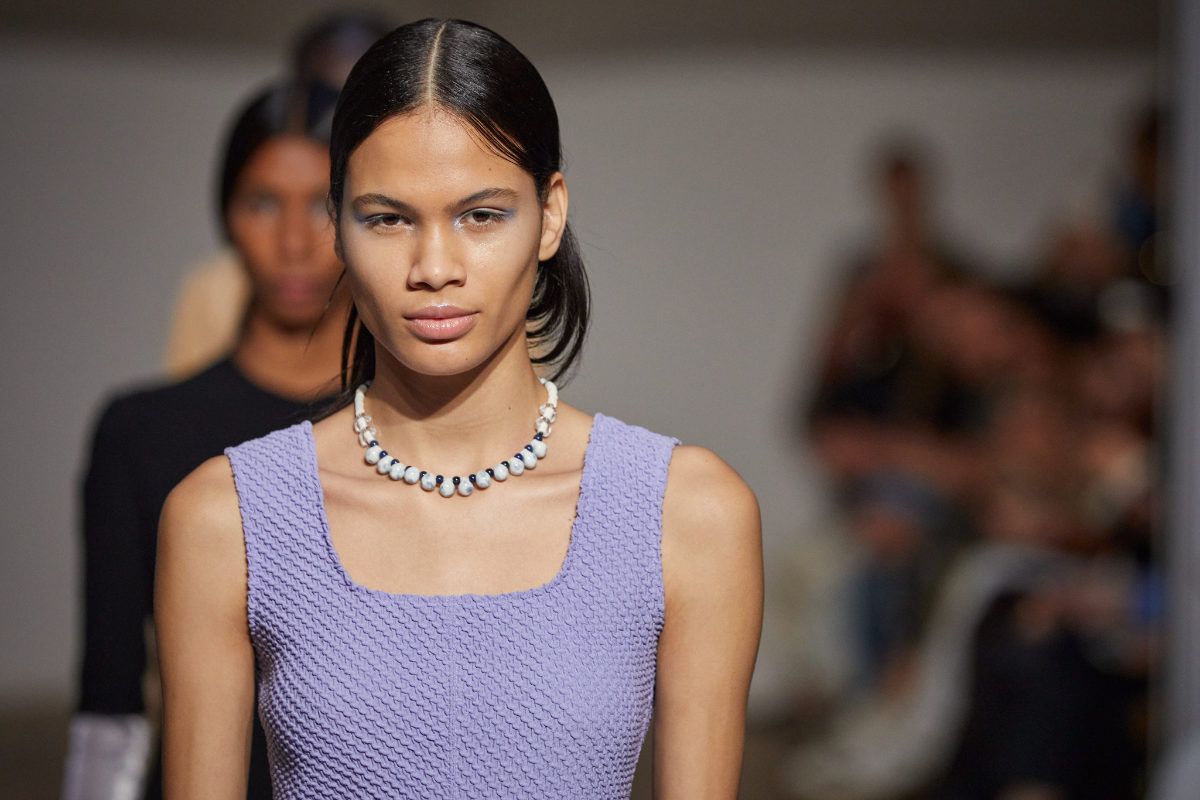

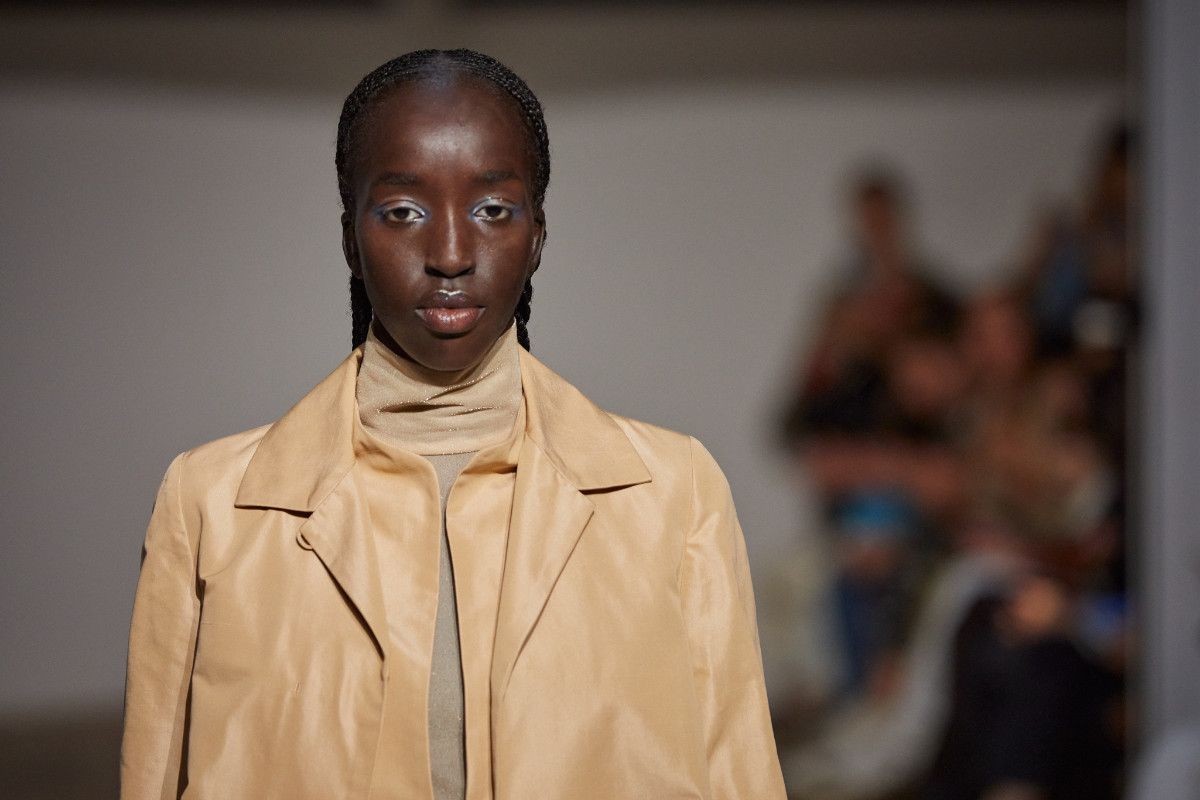

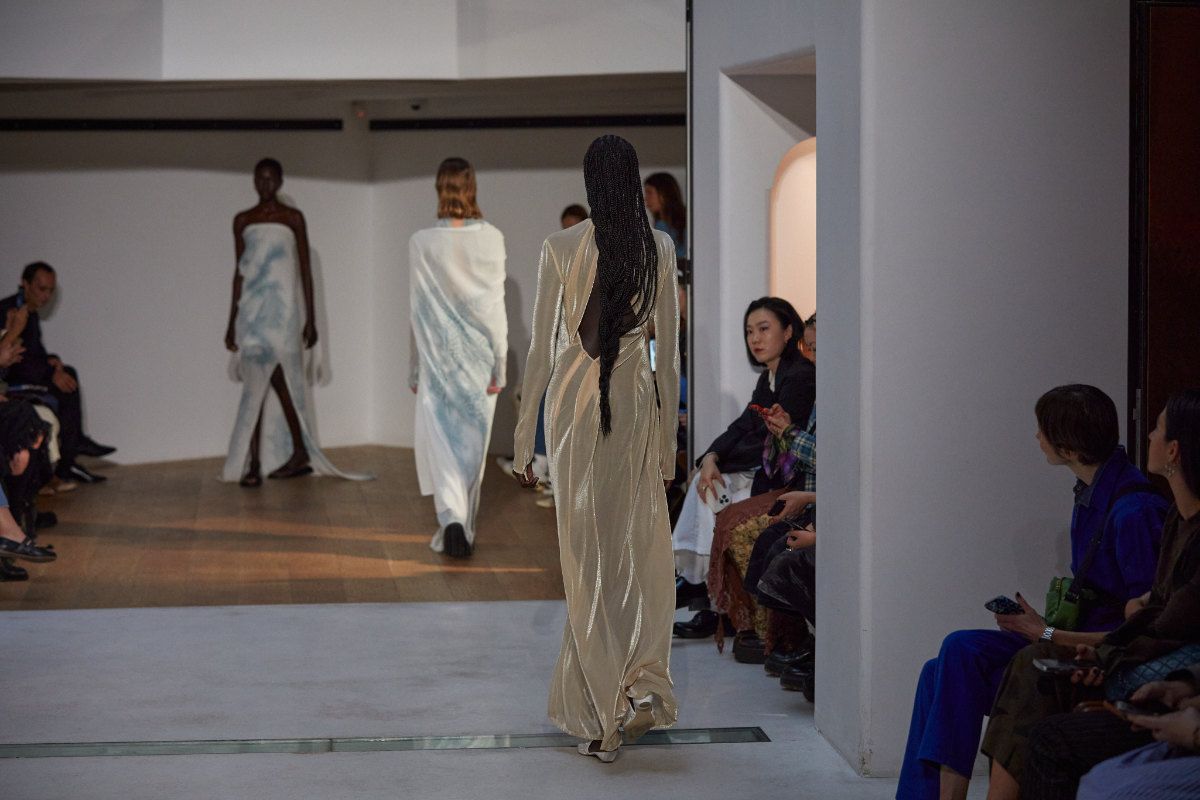

The 2024 Spring Summer Collection of Mame Kurogouchi travels down to Arita town in Saga Prefecture, historical for Early Imari pottery which harbours memories of the dawn of Japanese porcelain in the first half of the 17th century, while listening to craftsmanship of past and present-day potters, translating the stories that arise from fragments of memory and haze of white porcelain into the collection.
Maiko Kurogouchi was fascinated by Japanese porcelain’s rich craftsmanship, originally based on the techniques brought by the potters from the continent, which through the ages, by the hands of domestic potters transformed into a unique base craftsmanship in the country. Contemporary artists such as Ryohei Yamamoto and Yuki Hirakura of Komononari Kiln actualising Early Imari works from the beginning of 17th century, Mayumi Hamano creating works that express and resonate the styles of colouring technique from mid-17th century, all guide Maiko Kurogouchi to revisit the decades of history of Early Imari, exploring the crafts Japanised and individualised styles, learning the trial and error that lies behind them or perspective on everyday life.
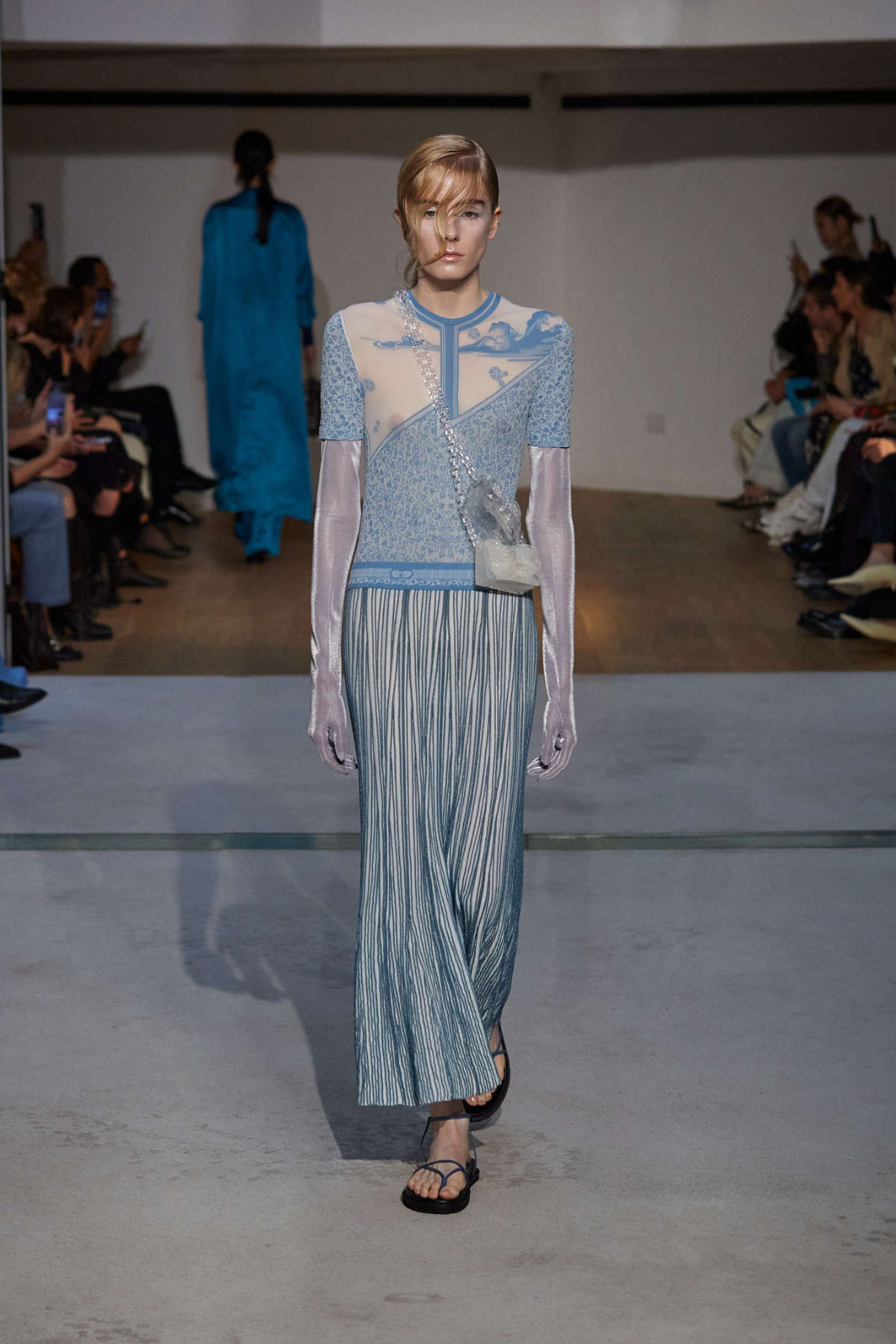
Inspired by the pale tones of Early Imari, created in pursuit of ideal ‘white’ which potters longed for in the past, are expressed in this season as different tones and textures of white, ecru, and mint green fabrics with emotional freshness.
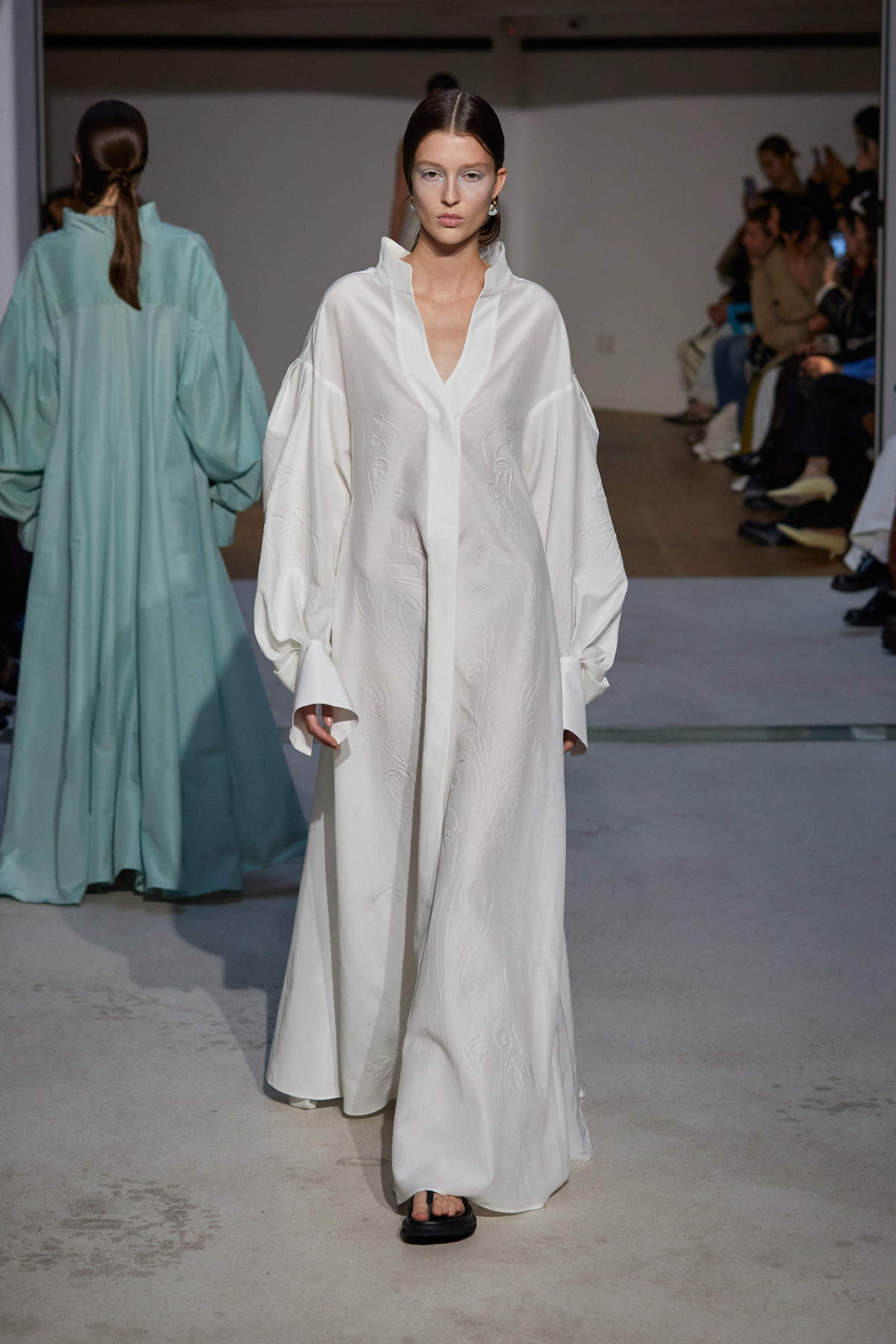
Gentle glow created by translucent glaze entwines with the base, an appearance of Early Imari, are transformed to lustrous glow of sheer lamé jersey series, covering the skin as if glaze were flowing. Unevenly dyed jacquard into short blouson and long gilet, asymmetrical hand-tie dyed dress evokes the hazy landscape that appears behind glaze. Rich textures inspired by ‘Yokoku’, one of the representative techniques of Early-Imari, appears as a key feature of this collection. The technique of pressing patterned molds to make patterns emerge inspired Maiko Kurogouchi, herself adopting the technique for this collection in attempt to ‘transforming porcelain into clothes’. The newly introduced special embossing technique symbolises this collection, appearing subtle yet moving freely and dynamically on denim pants and jackets, to oversize silk cotton dress and shirts. The 'yoko-ku' embossed texture is not limited to floral patterns, also gently brought into minimalist pieces such as compact recycled polyester jacquard dresses and geometric texture of tops.
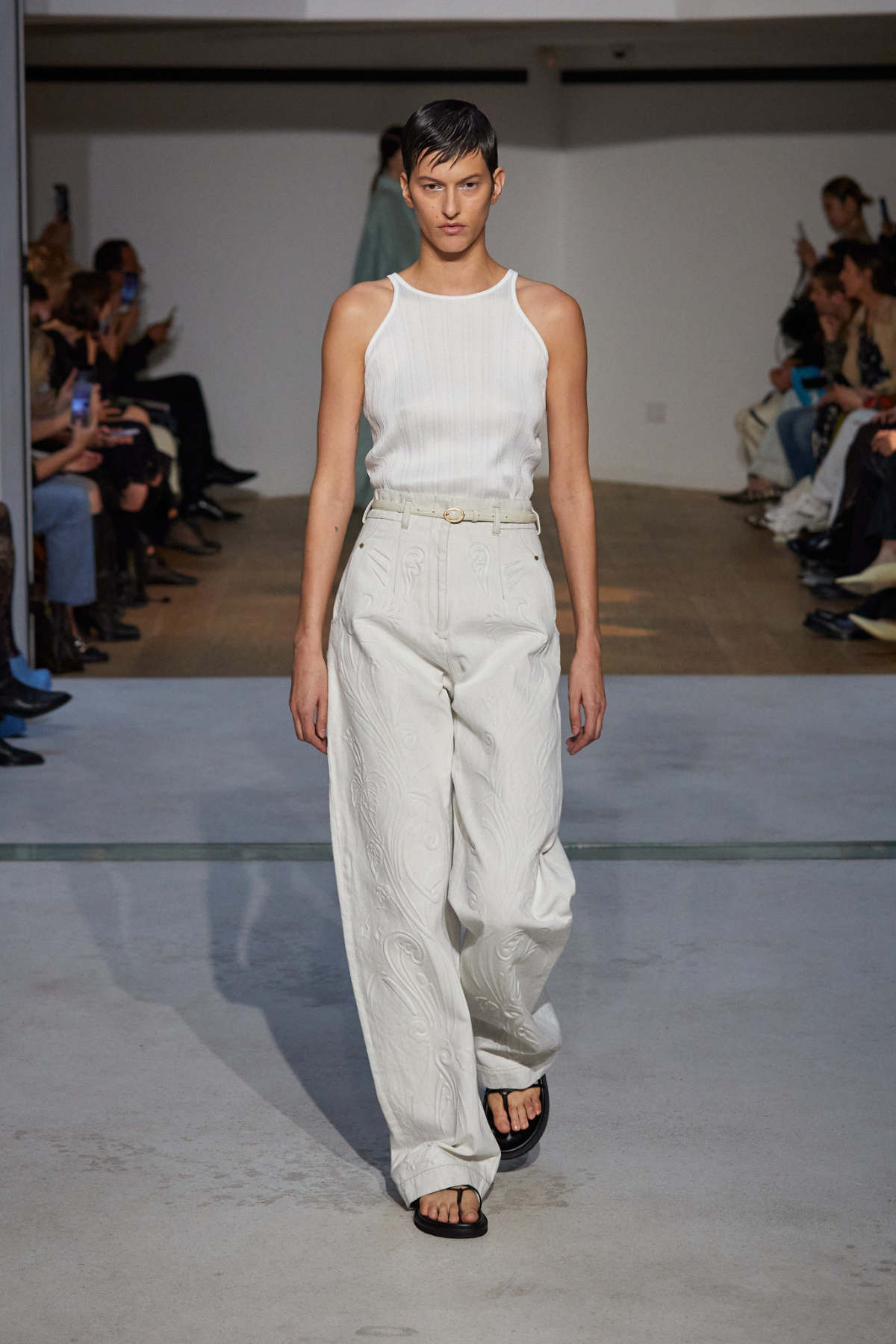
Landscapes of the drawn on porcelain from Early-Imari are translated and expressed in various styles in conjunction with the designer’s own memories. Jacquards, reminiscent of the floral motifs often drawn on Early-Imari wares, appear on the signature dresses and active jumpsuits. The dawn of Japanese Porcelain modeled its paintings after sceneries from the China’s Tang Dynasty, followed by later artists gradually painting the sceneries around them. Inspired by this, Kurogouchi incorporates the scenery of Saga that she visited repeatedly into her designs. The seascape decorating the sheer knit dress and tops with plenty of blank space with sharp contrasts like shards of porcelains, or the scenery woven into the silk coat and set-up are a portrayal of fragments of Kurogouchi’s memories, and various motifs arranged on the same plane invite one to a world of nostalgia going back and forth between past and present.
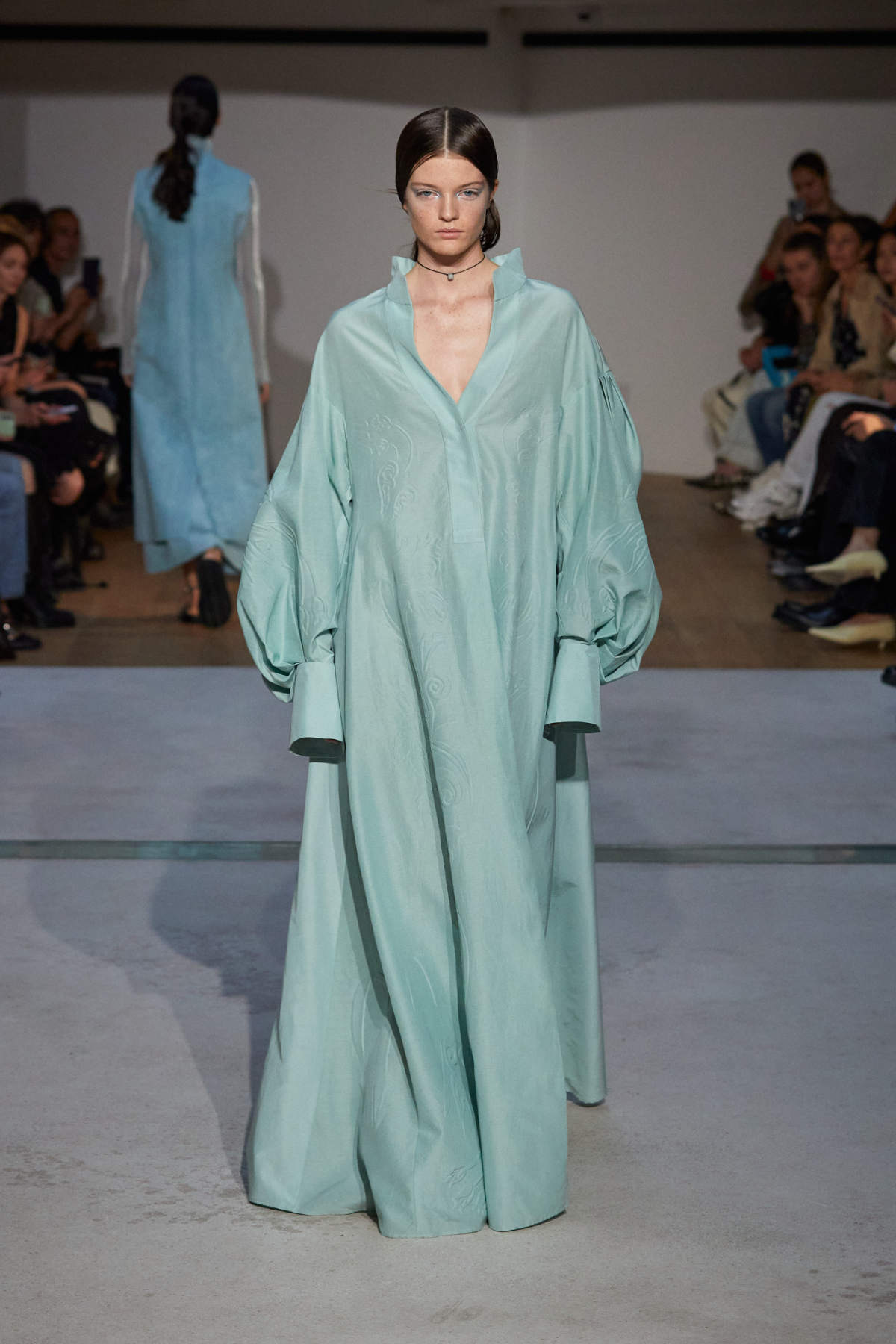
Asymmetrical designed knit camisoles and casual knit vests are woven with delicate handwork, each piece designed as if broken pieces of various sizes are combined, making it possible for intricate and unique motifs to coexist, gently embodying one’s body eloquently are porcelain fragments and scatters conveying the memories of the past.
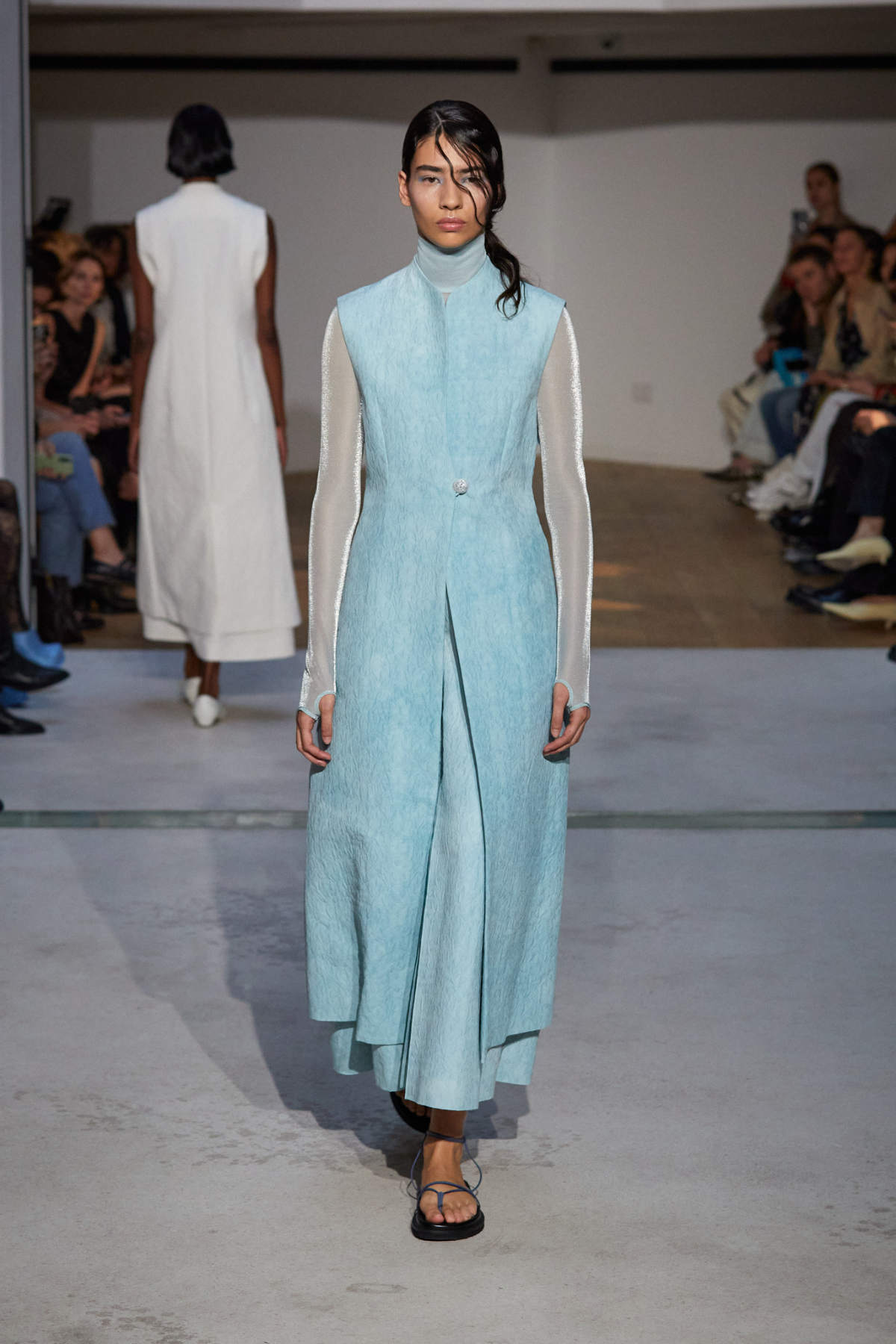
Two types of porcelain buttons, detailed in several looks are key fragments that accentuate the collection. With the support of artist Mayumi Hamano, these buttons are shaped and painted by Maiko Kurogouchi herself in a small kiln in Arita Town.
